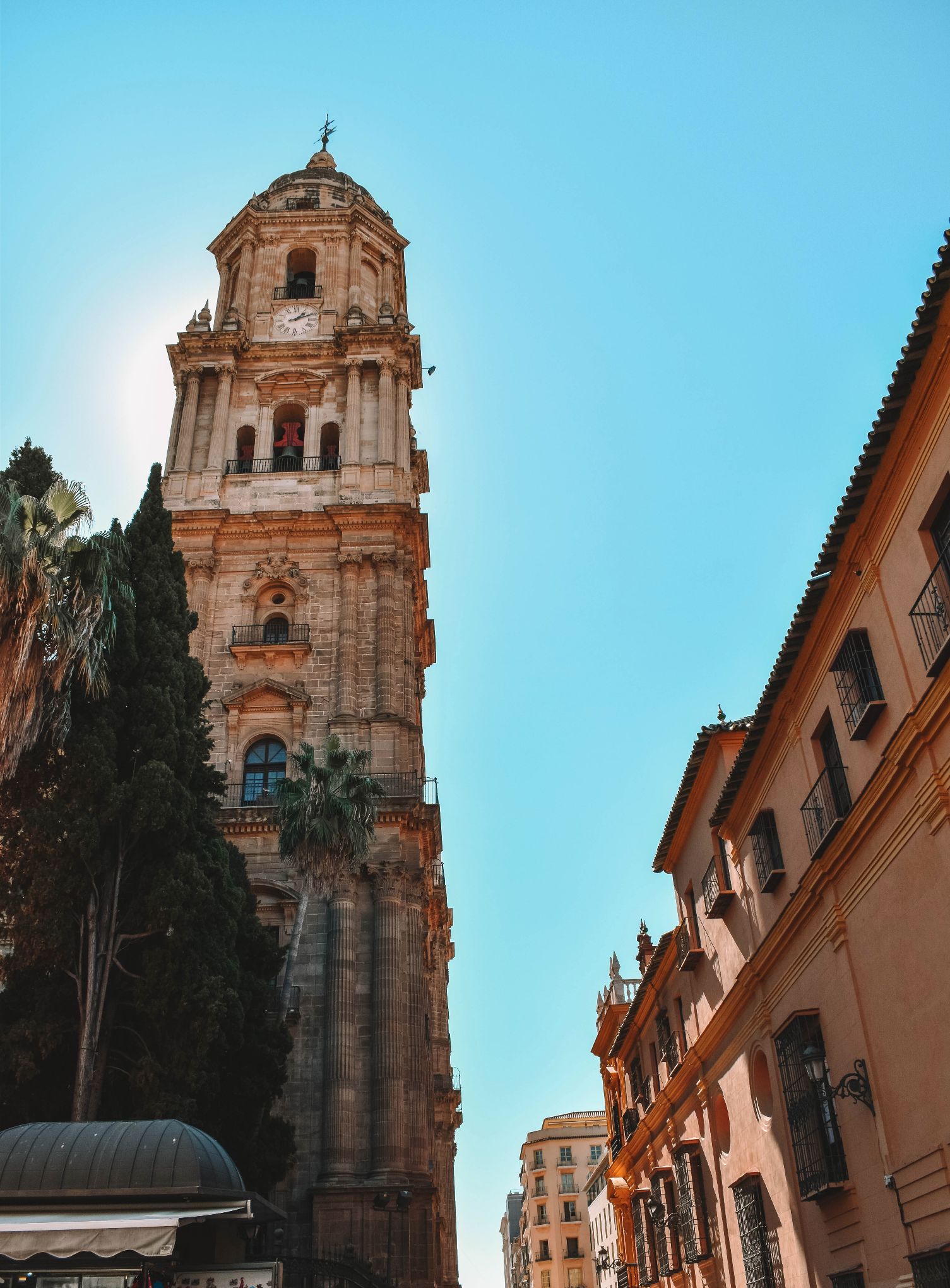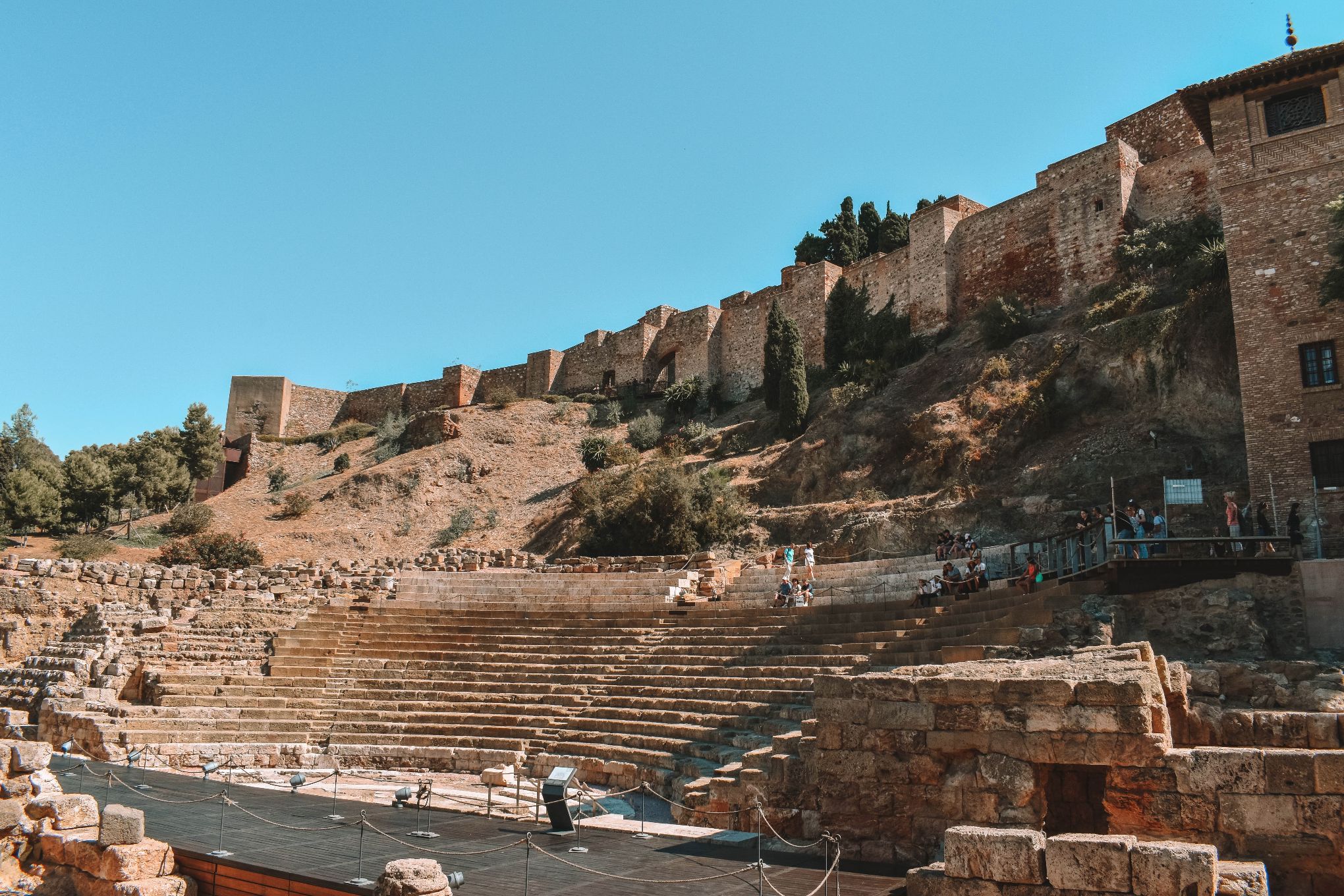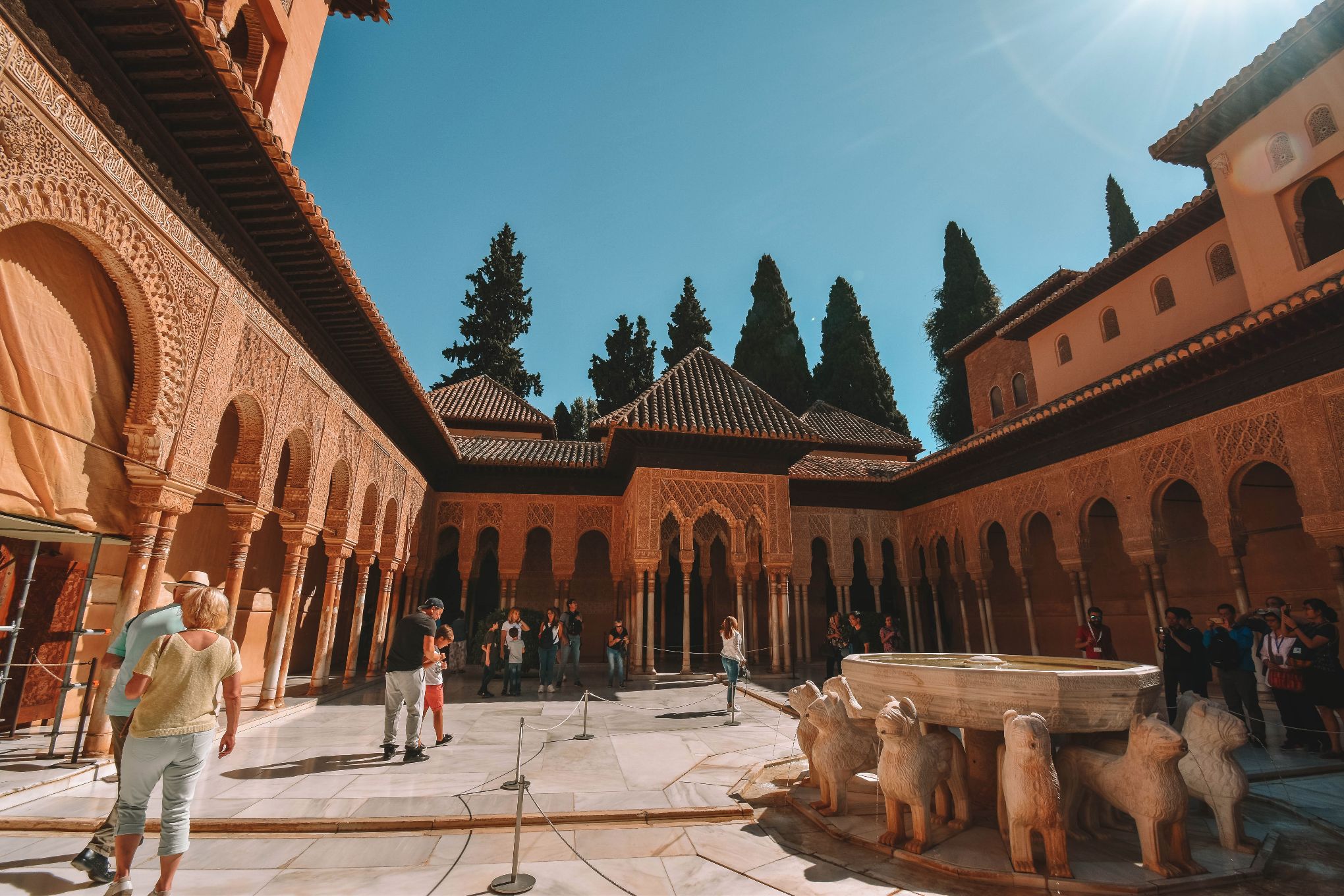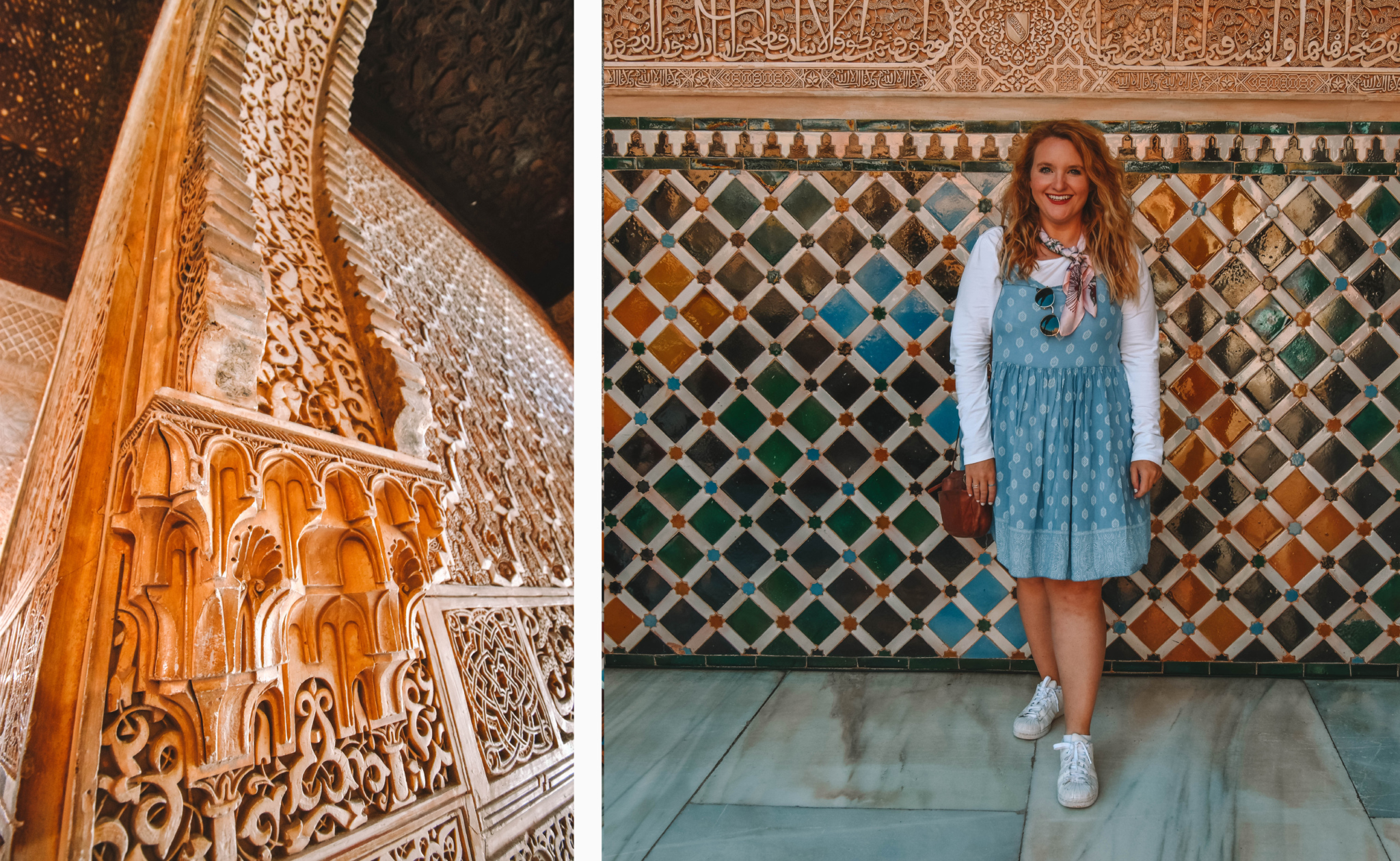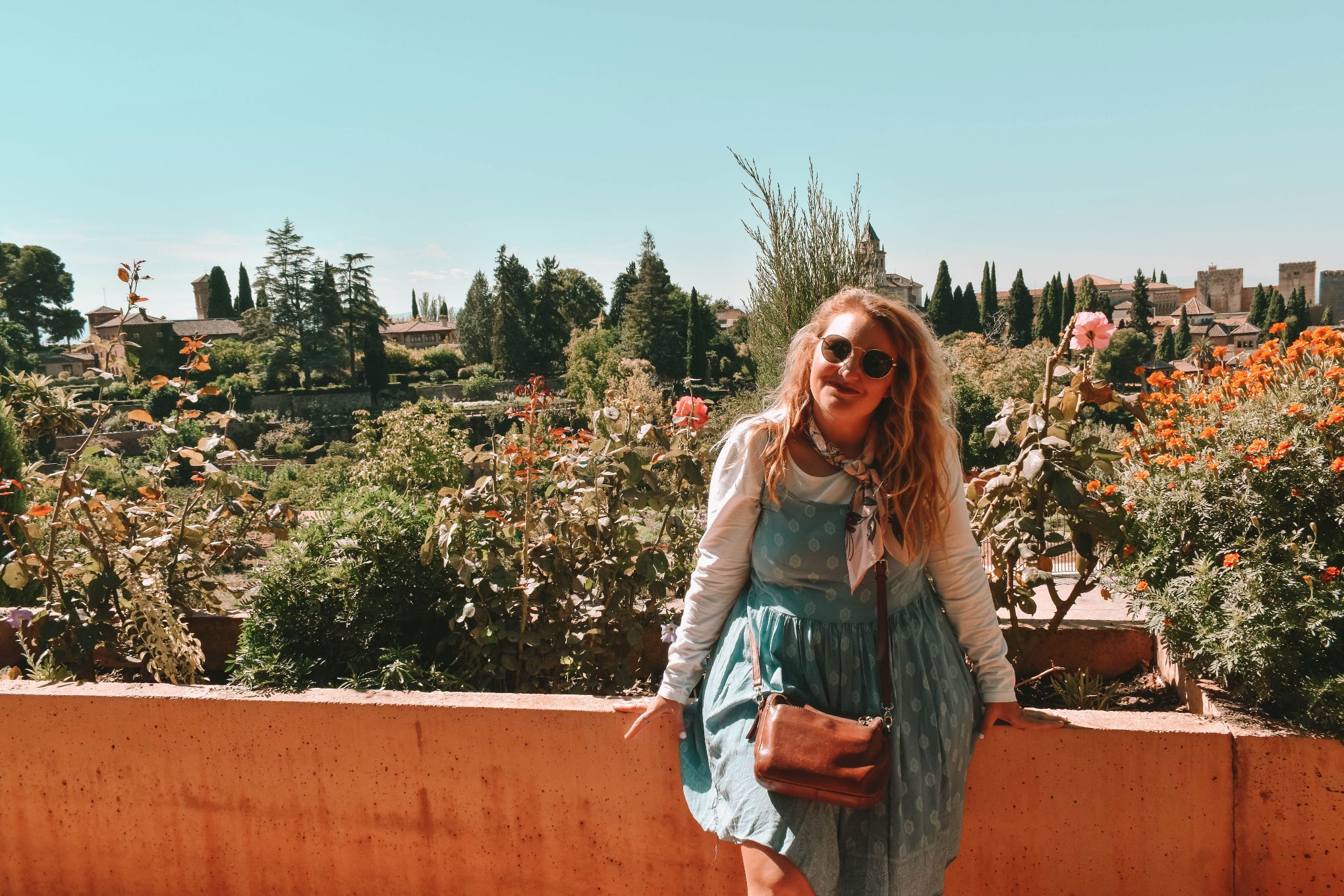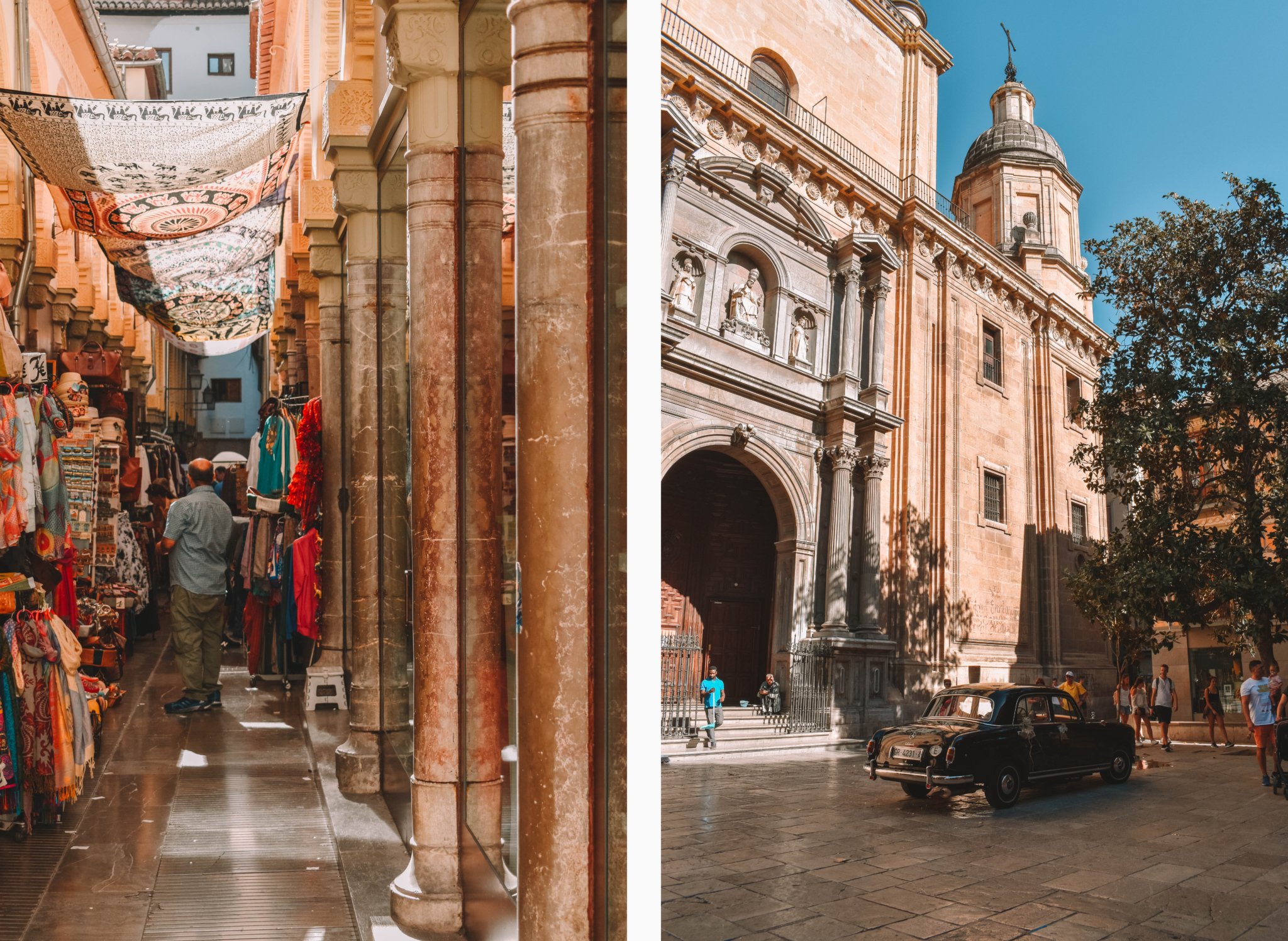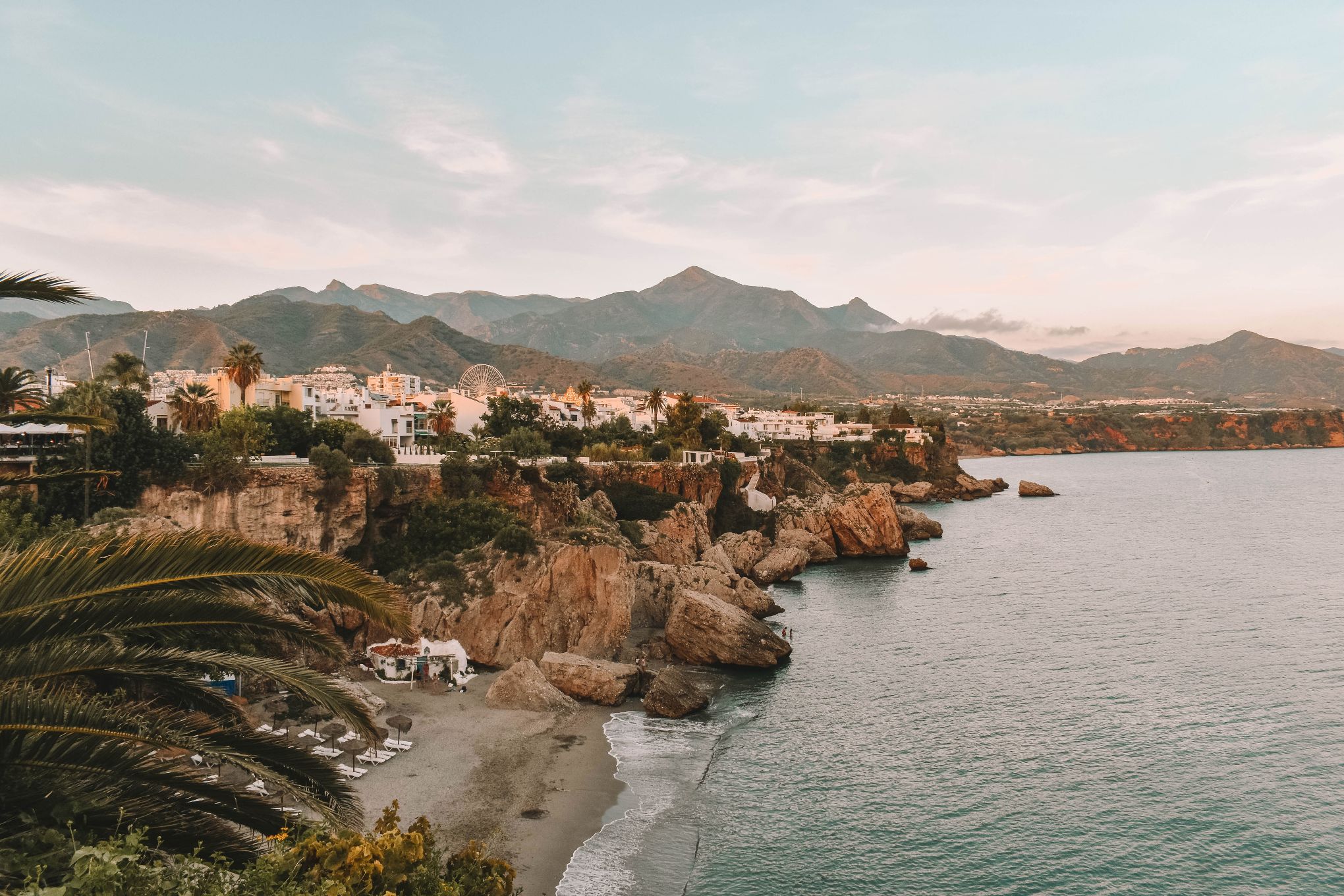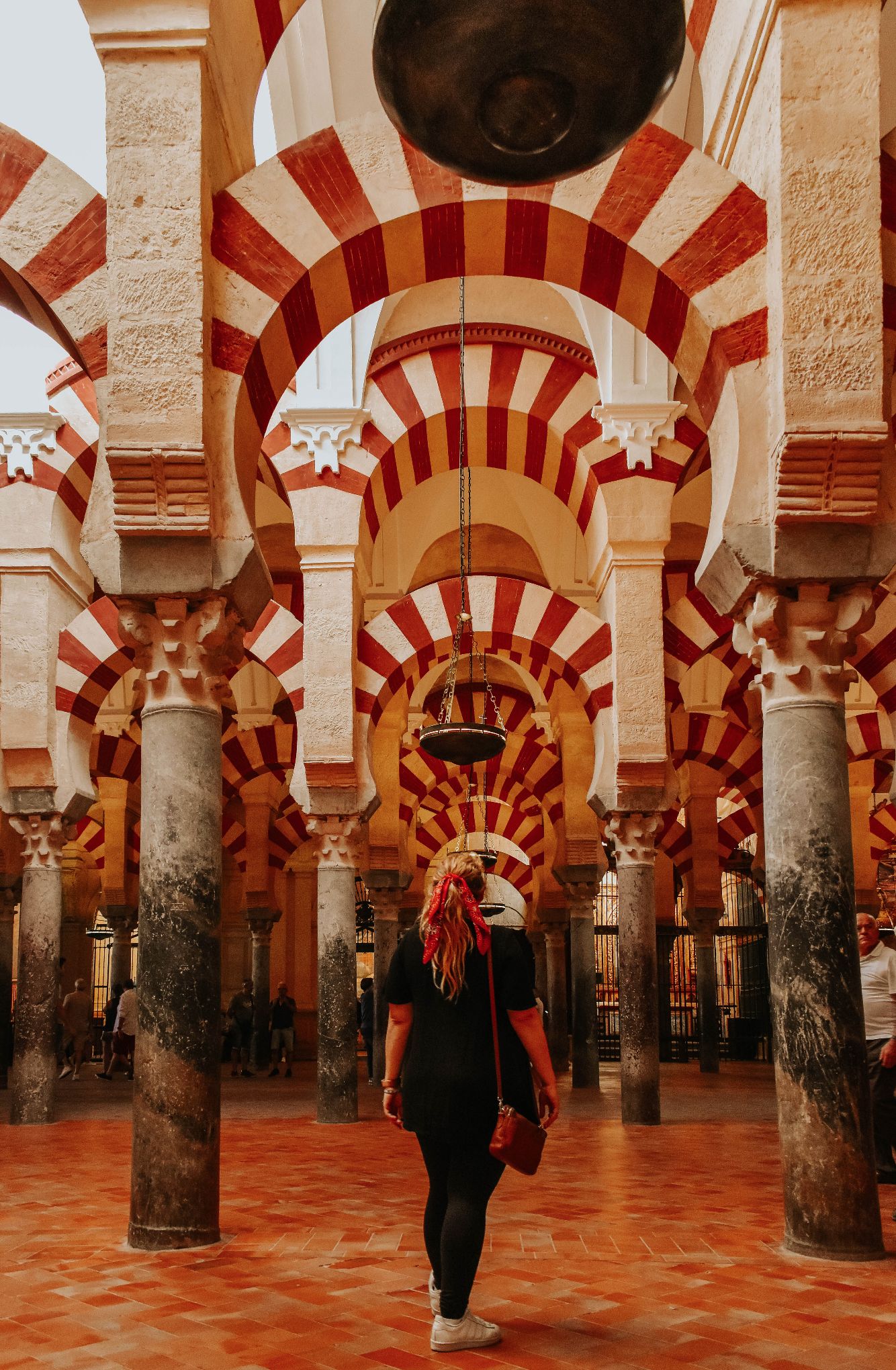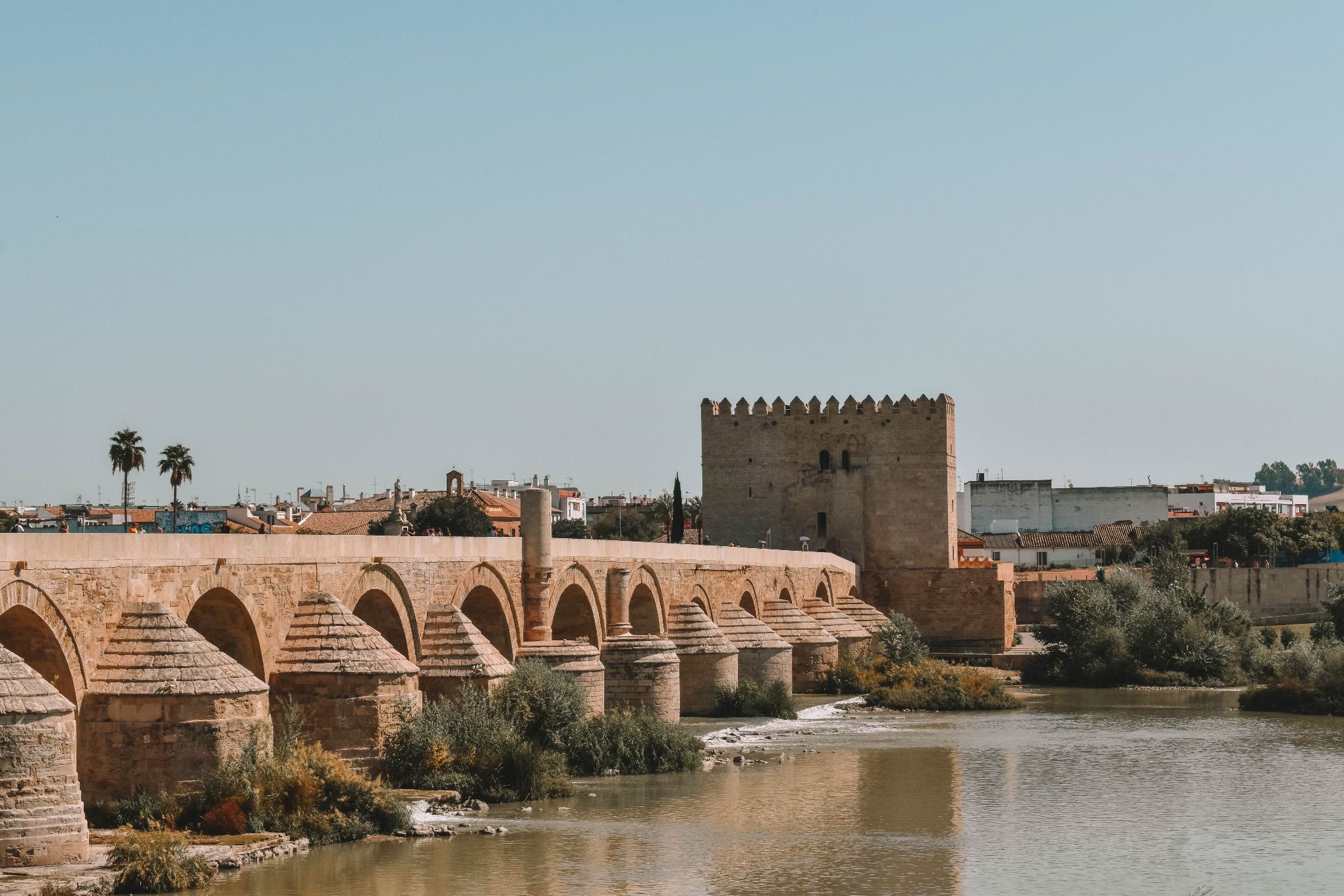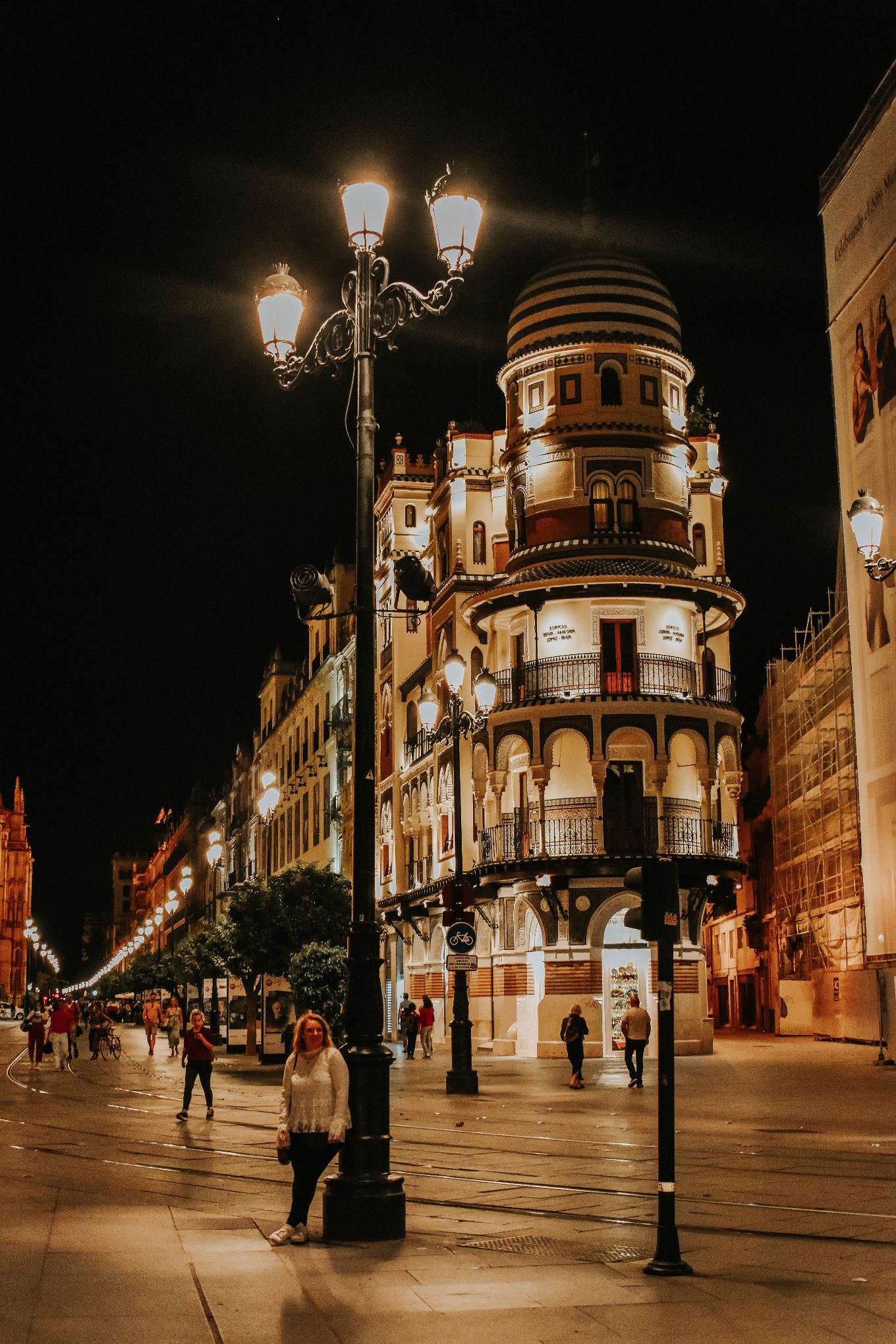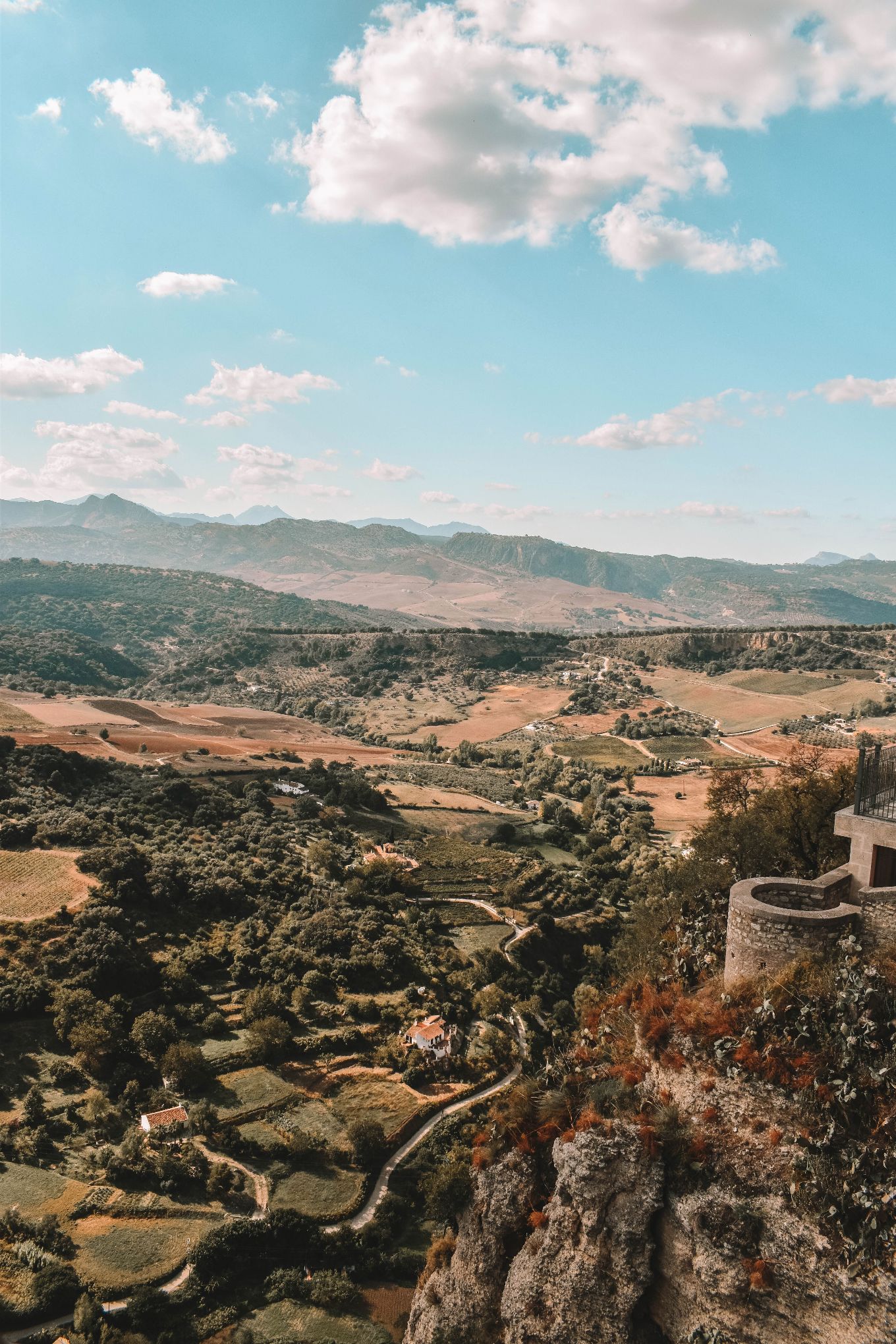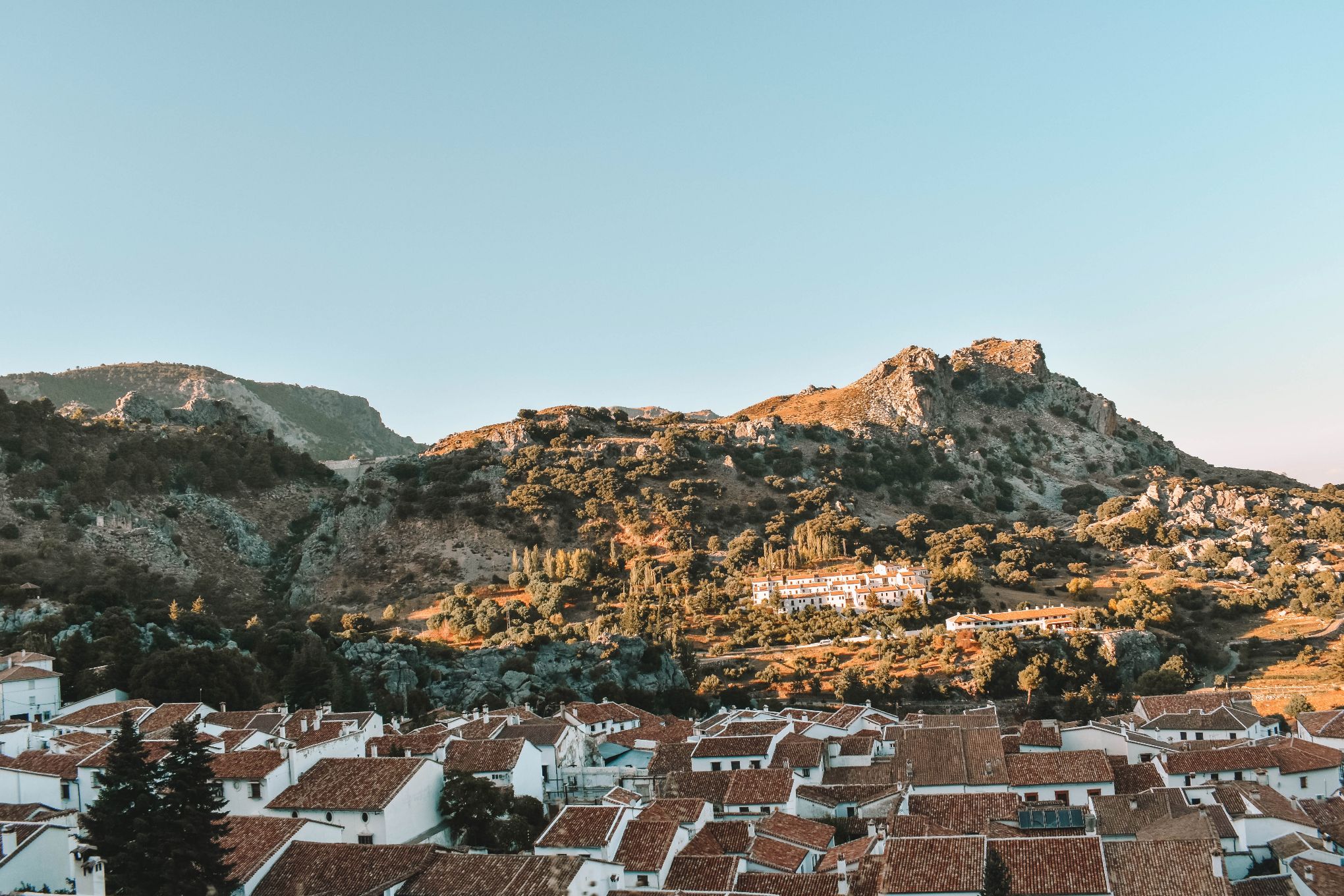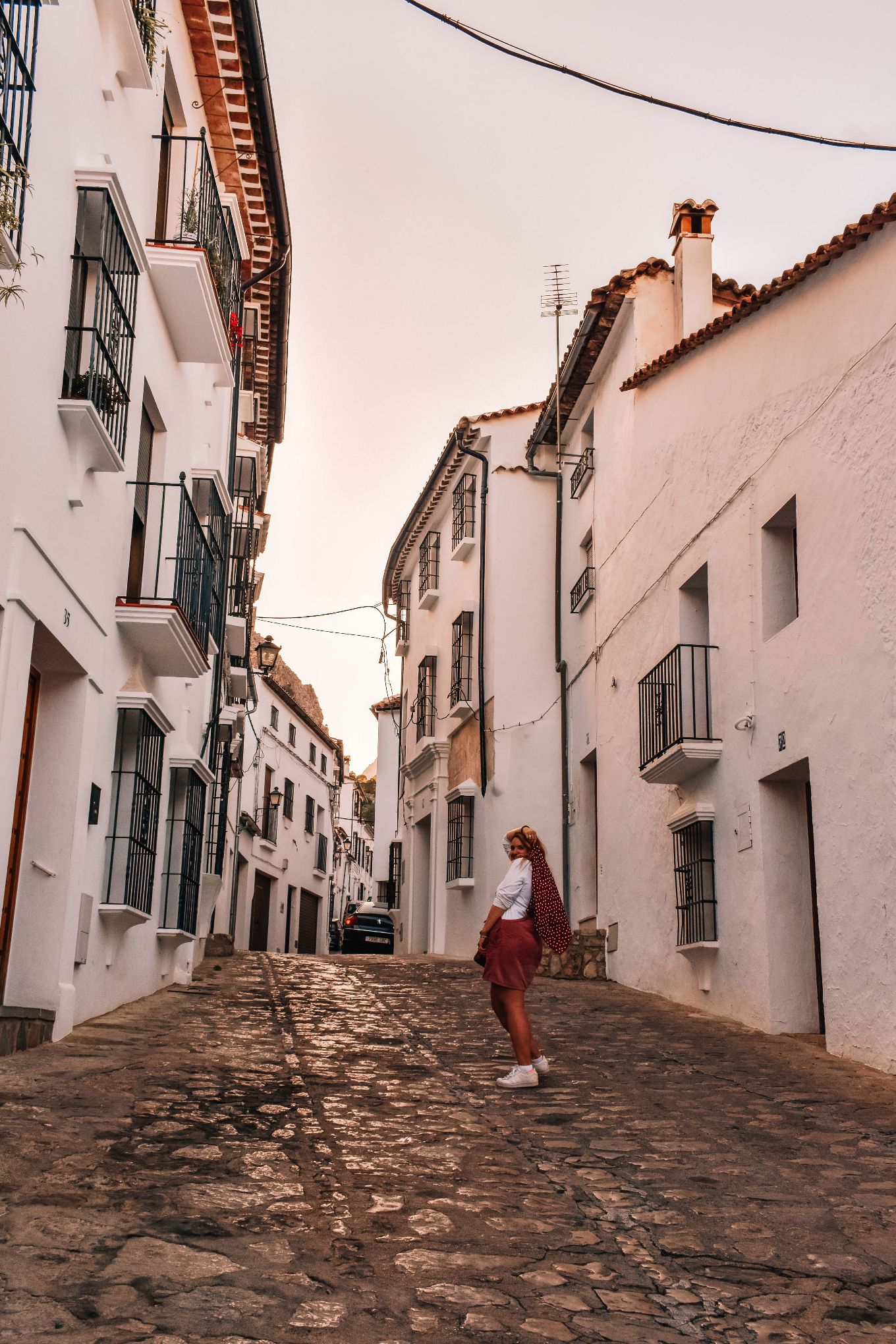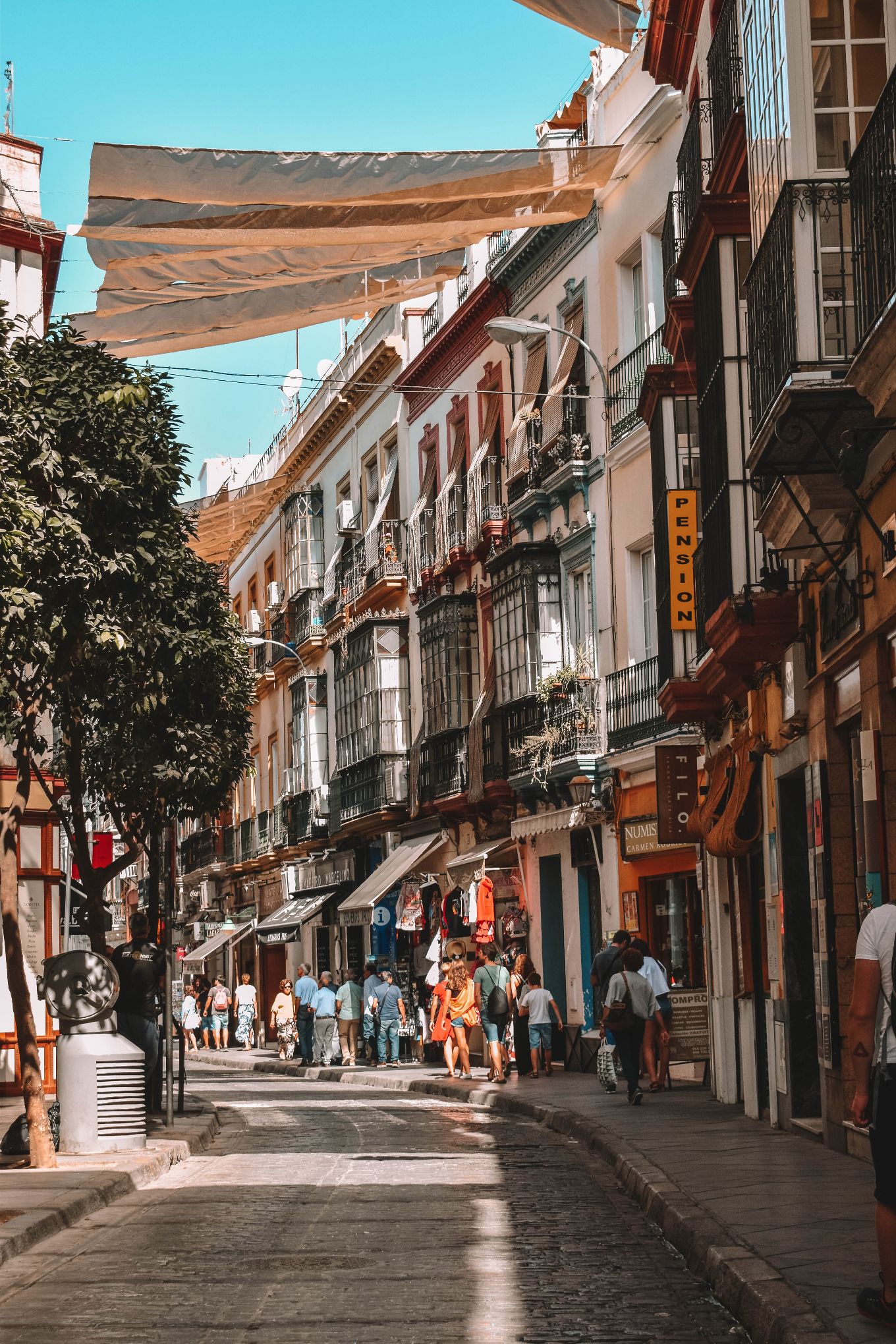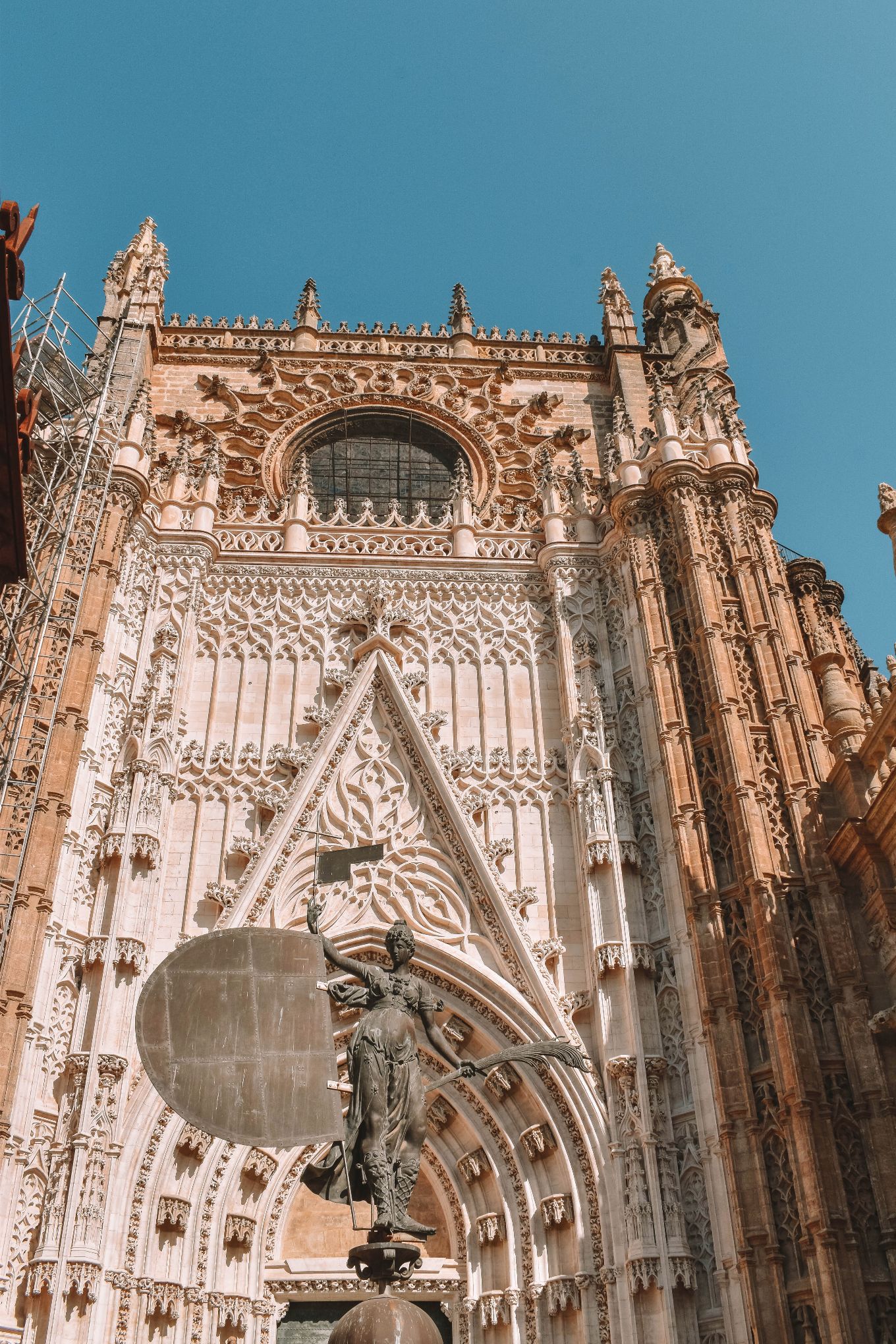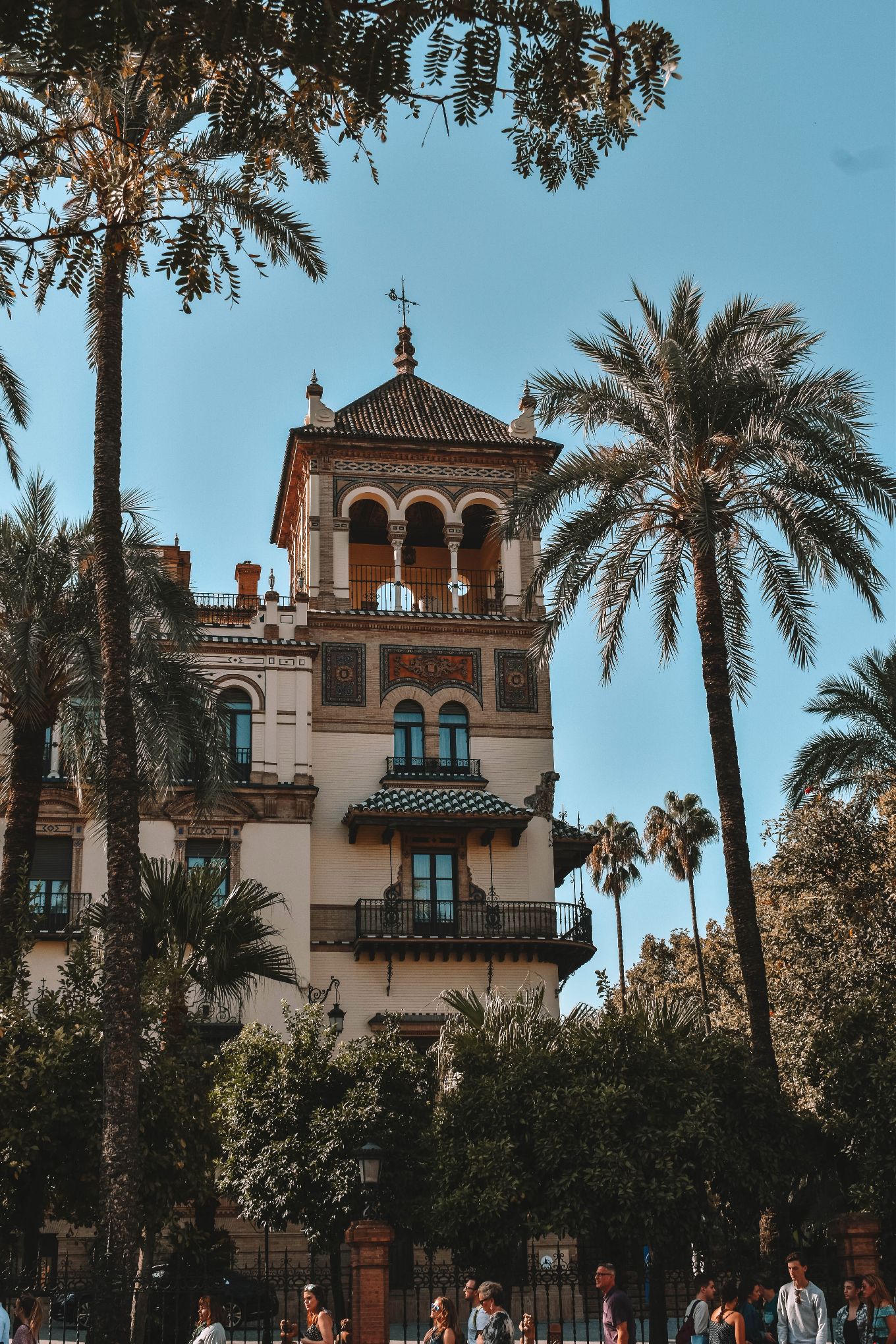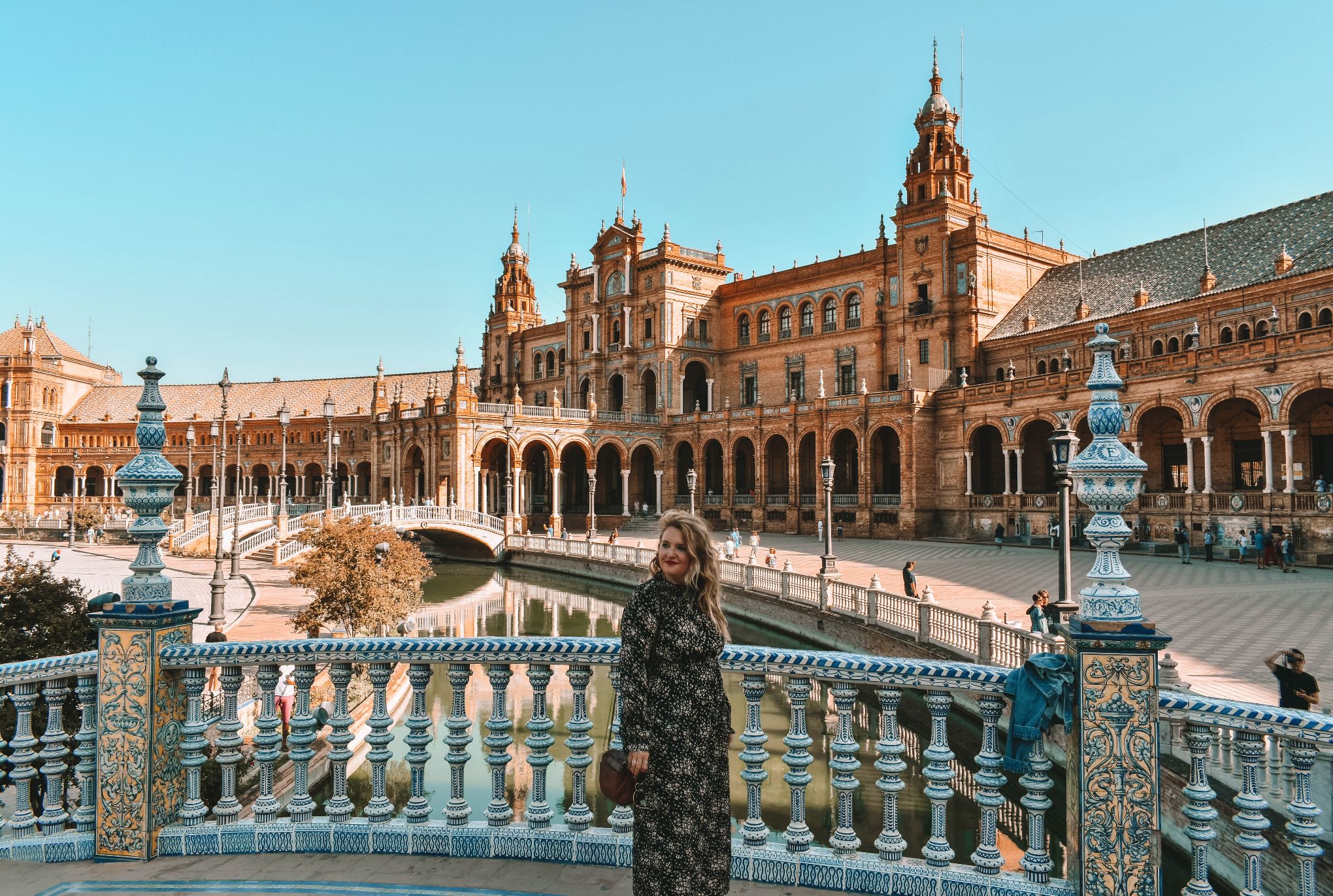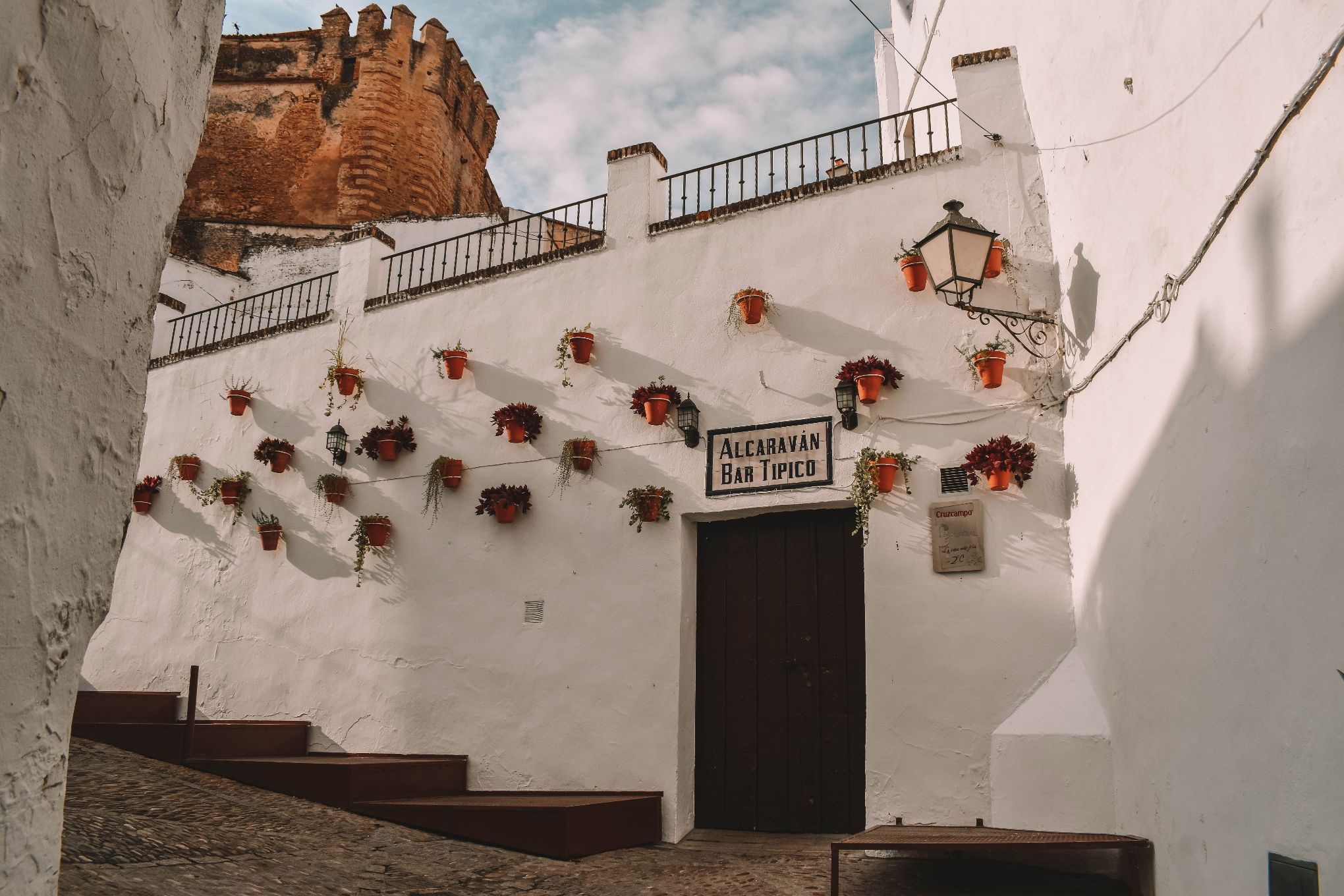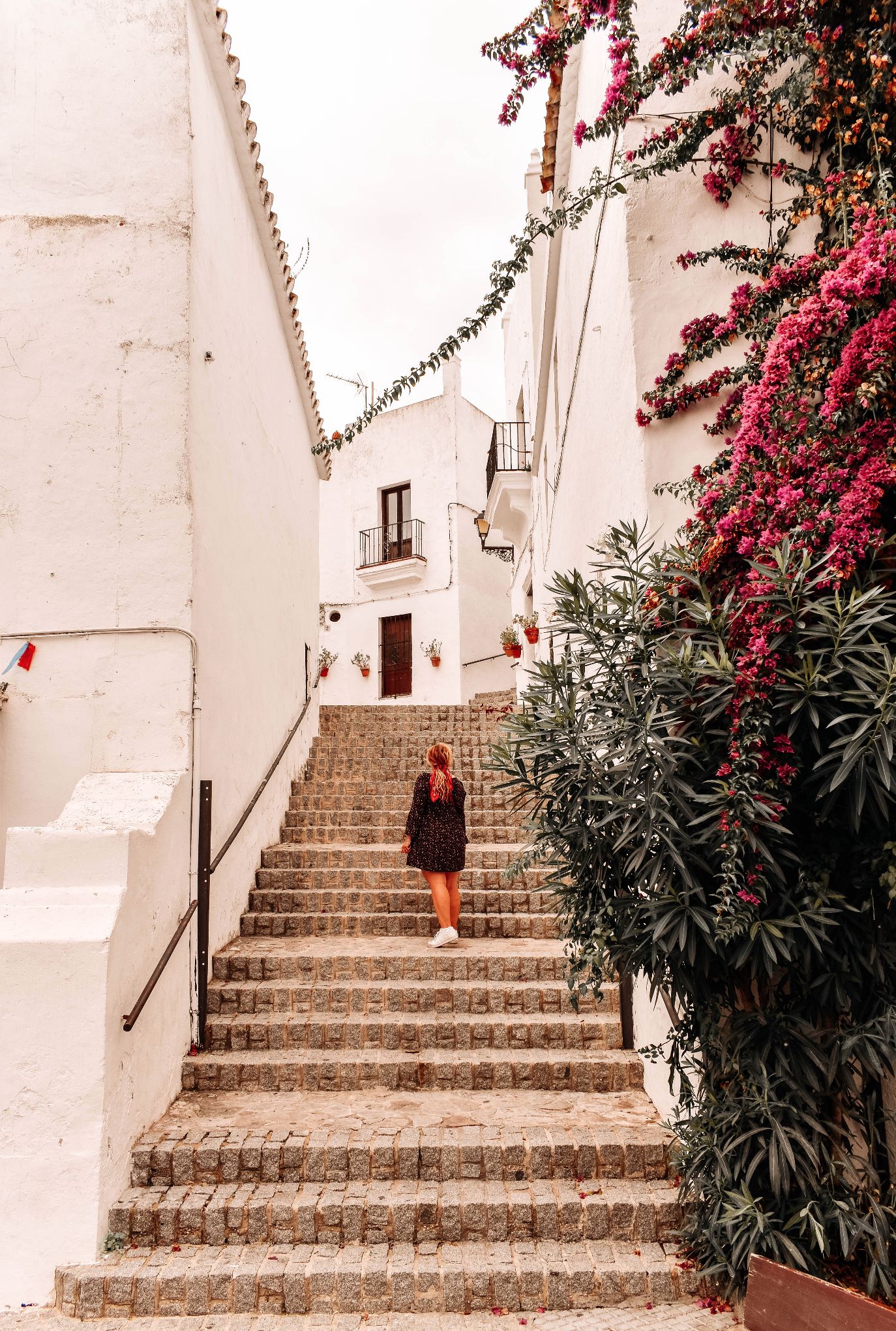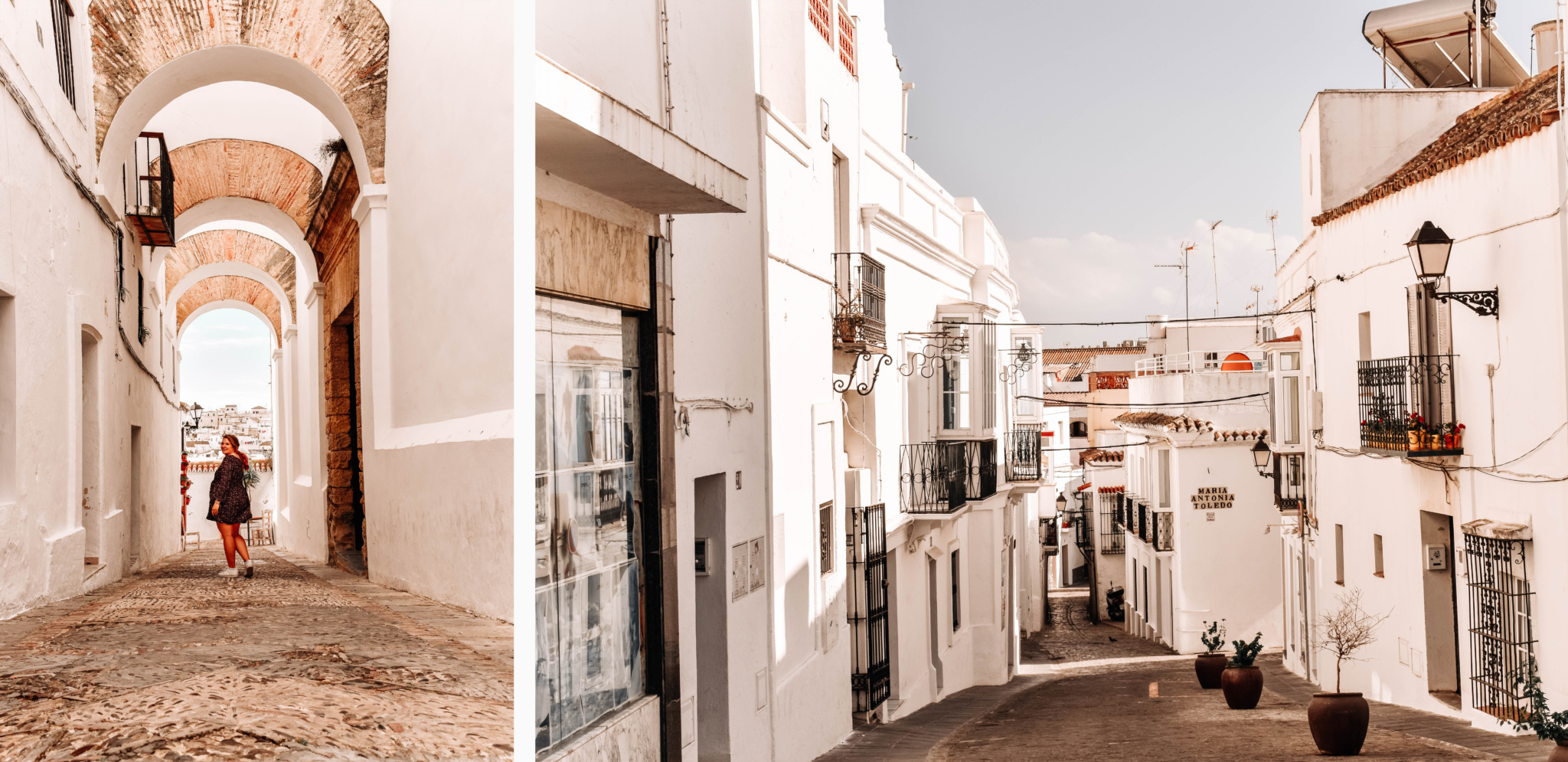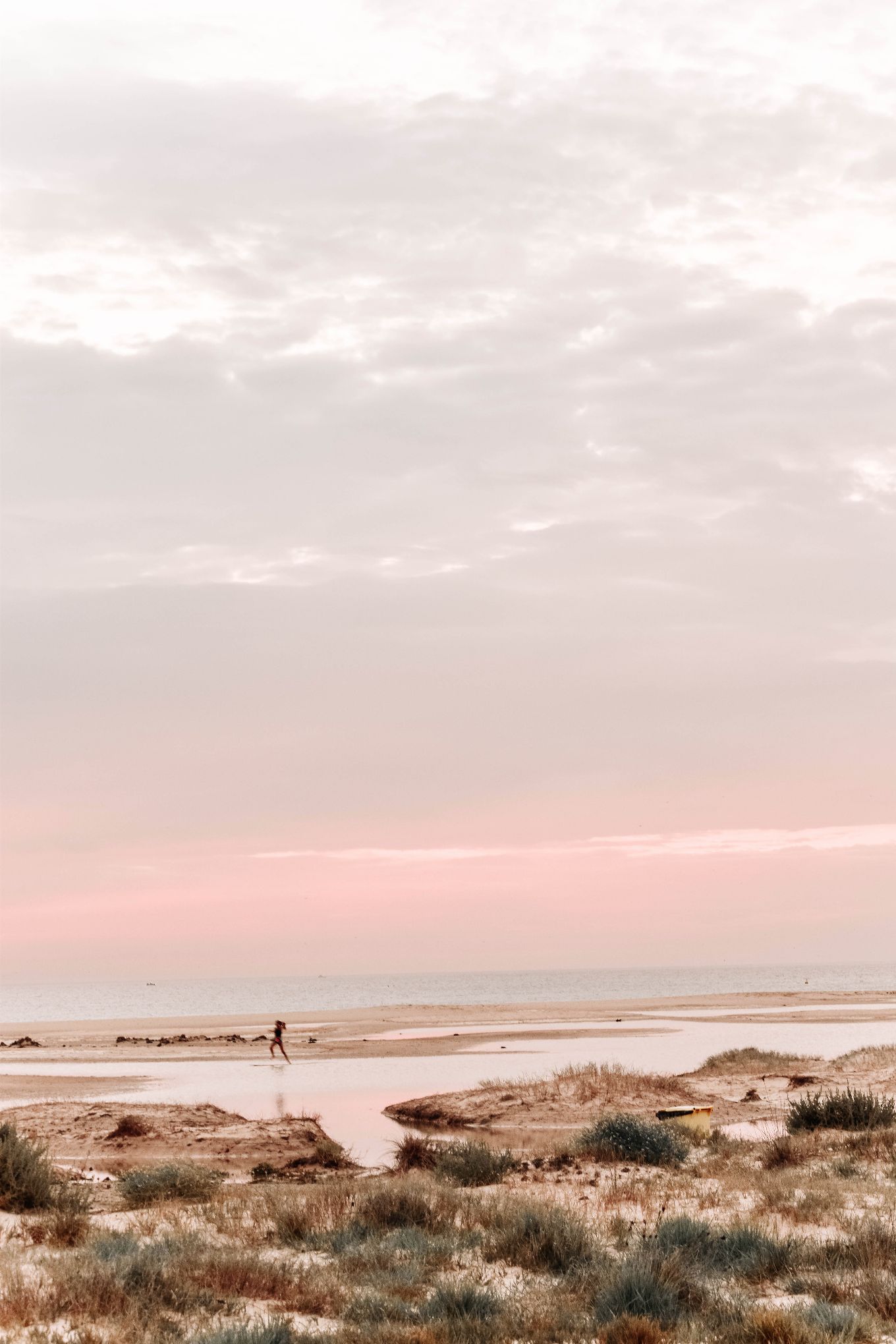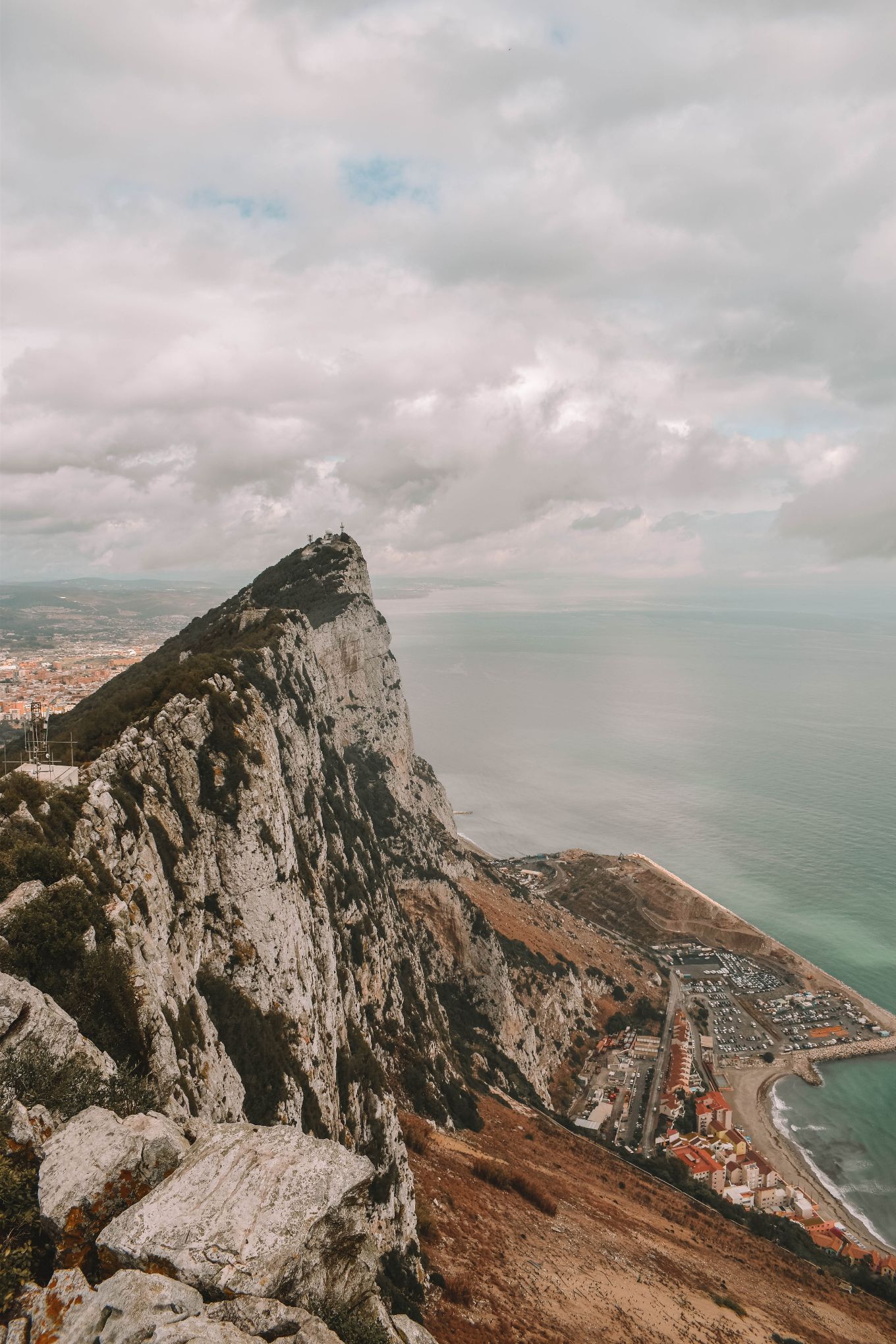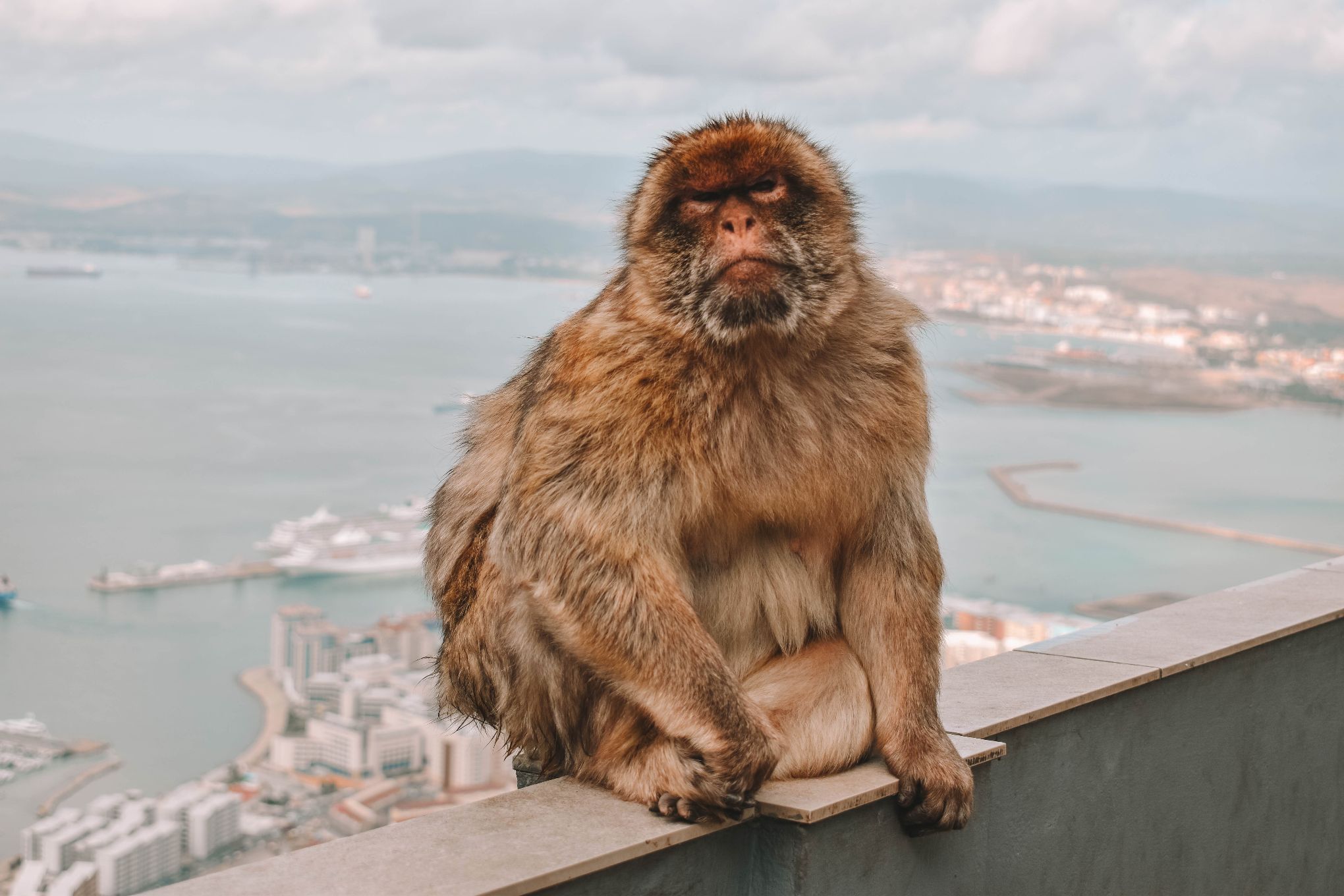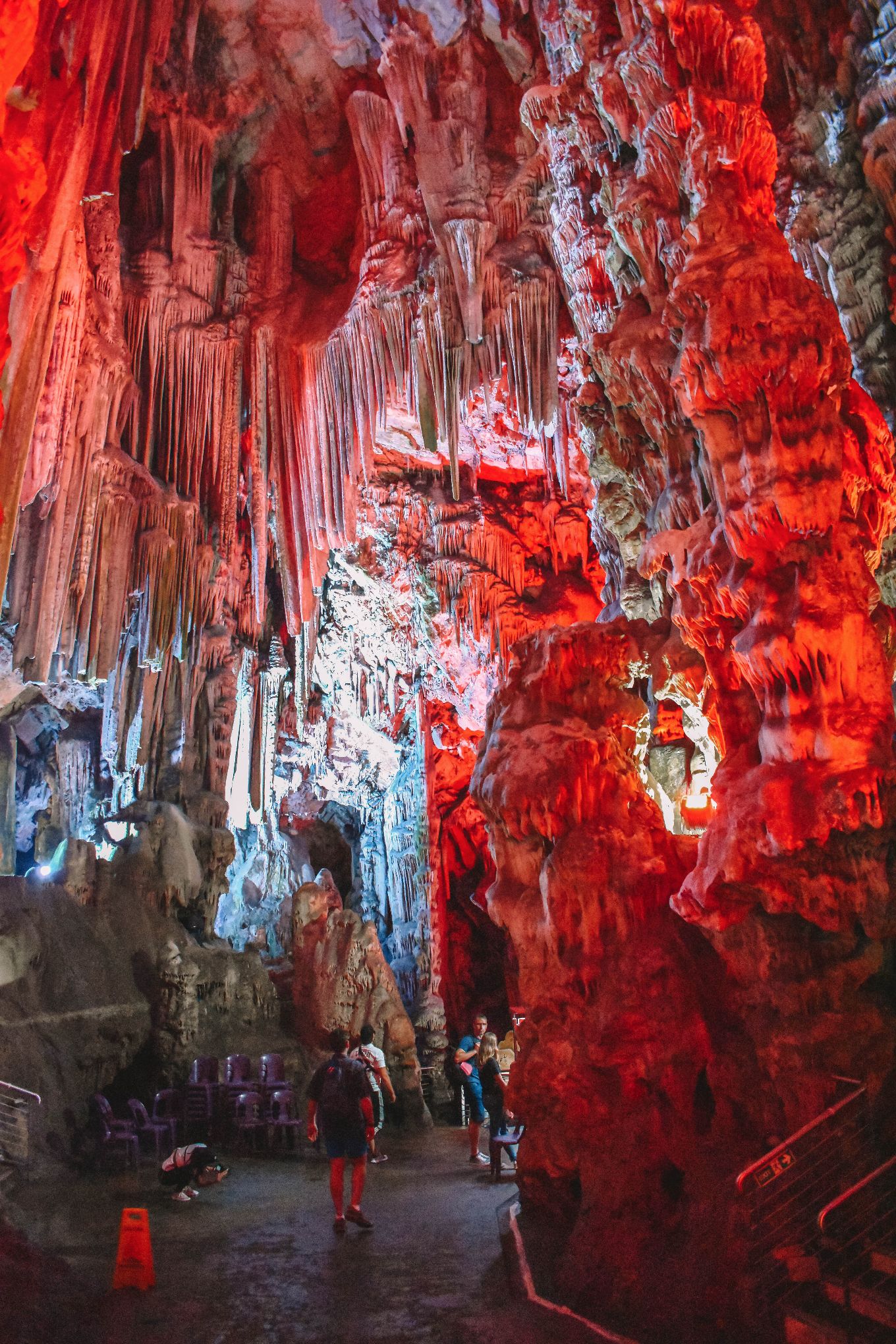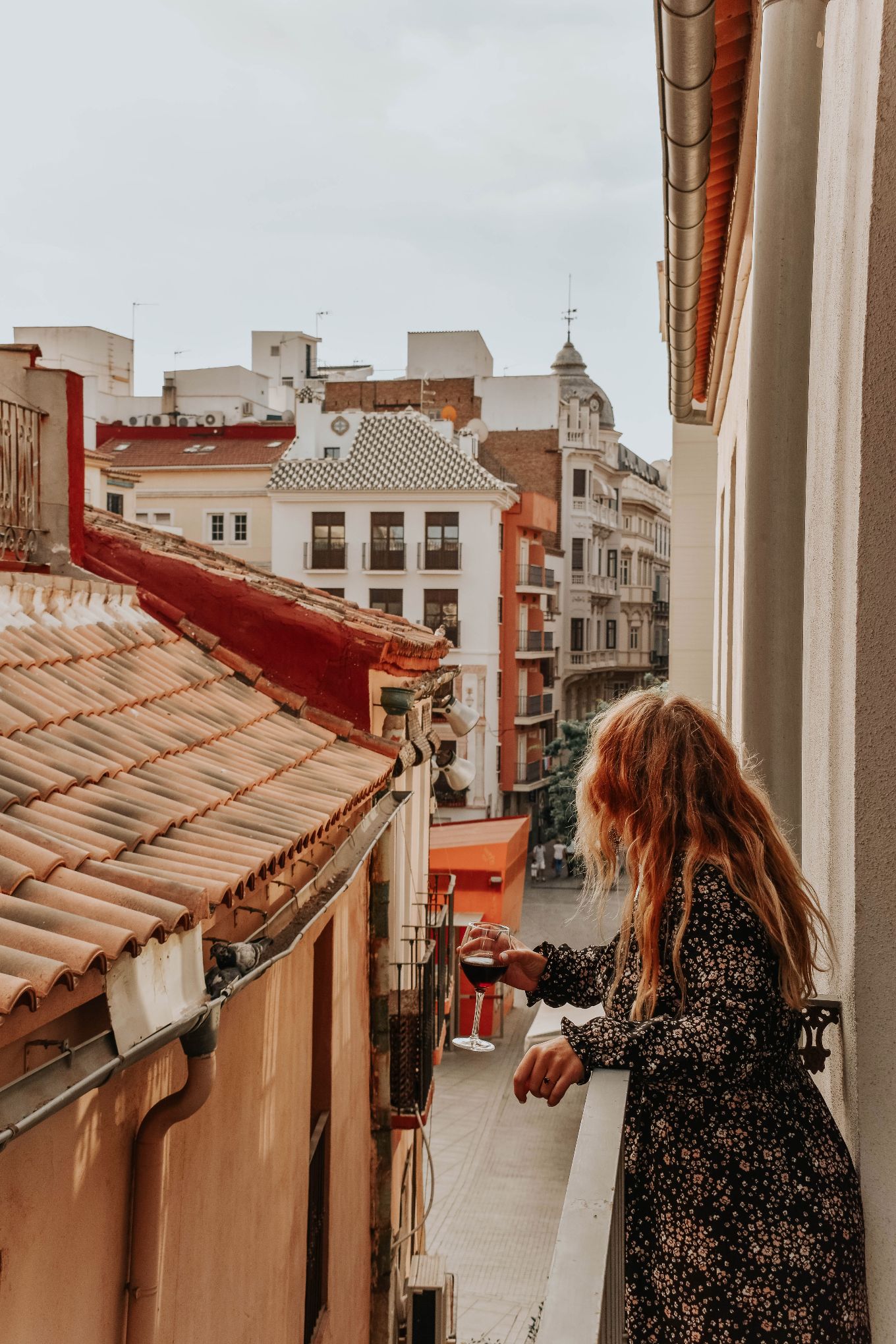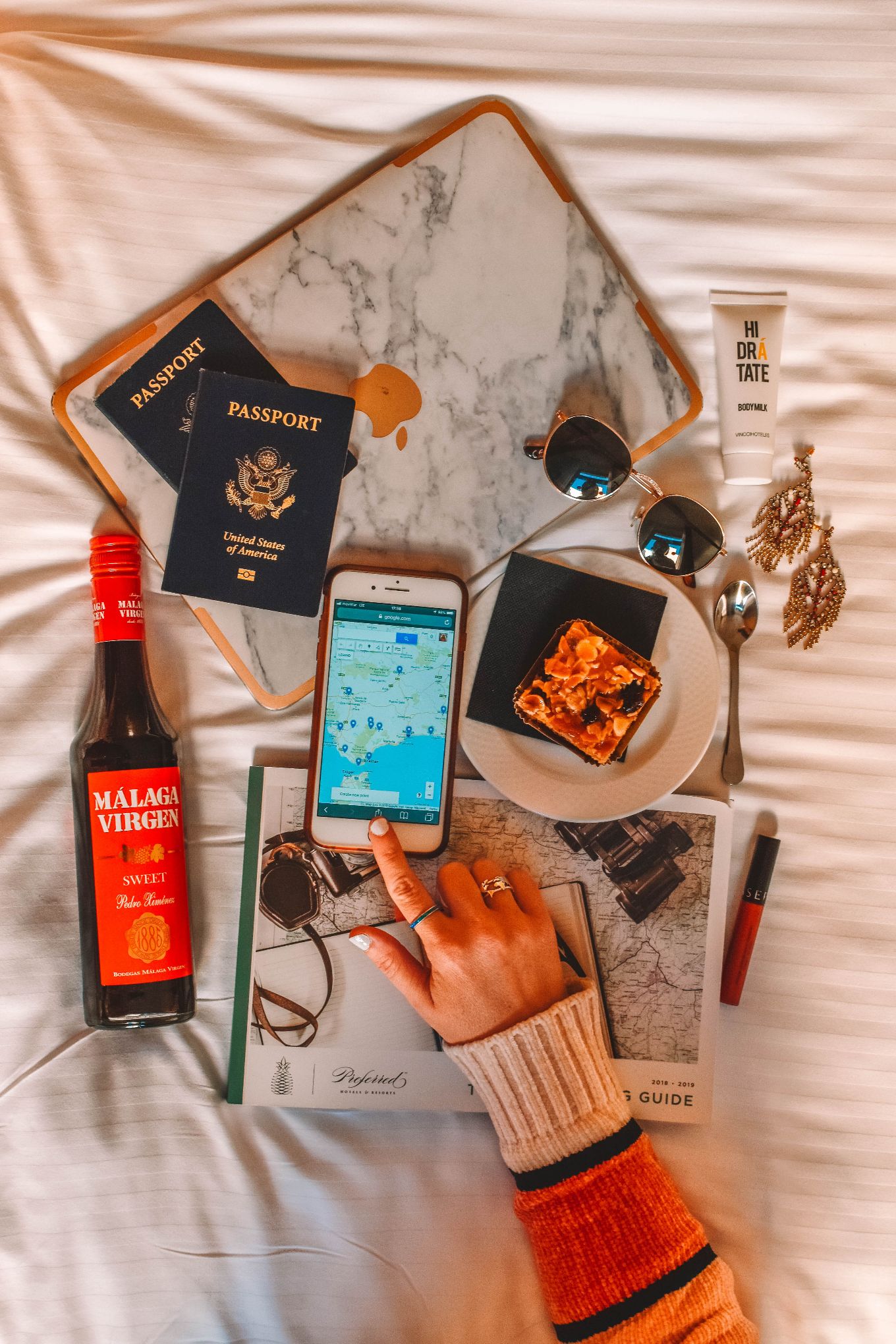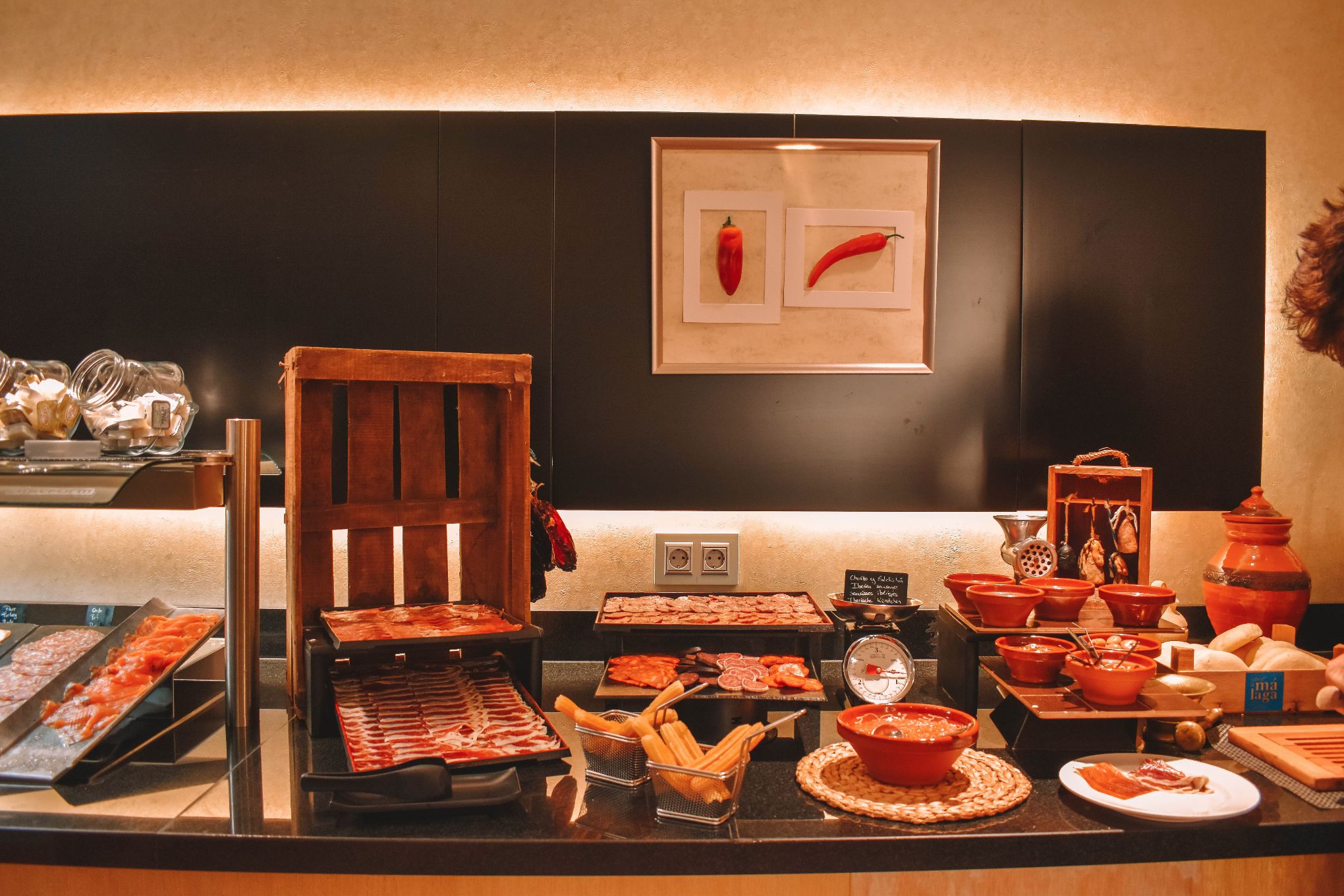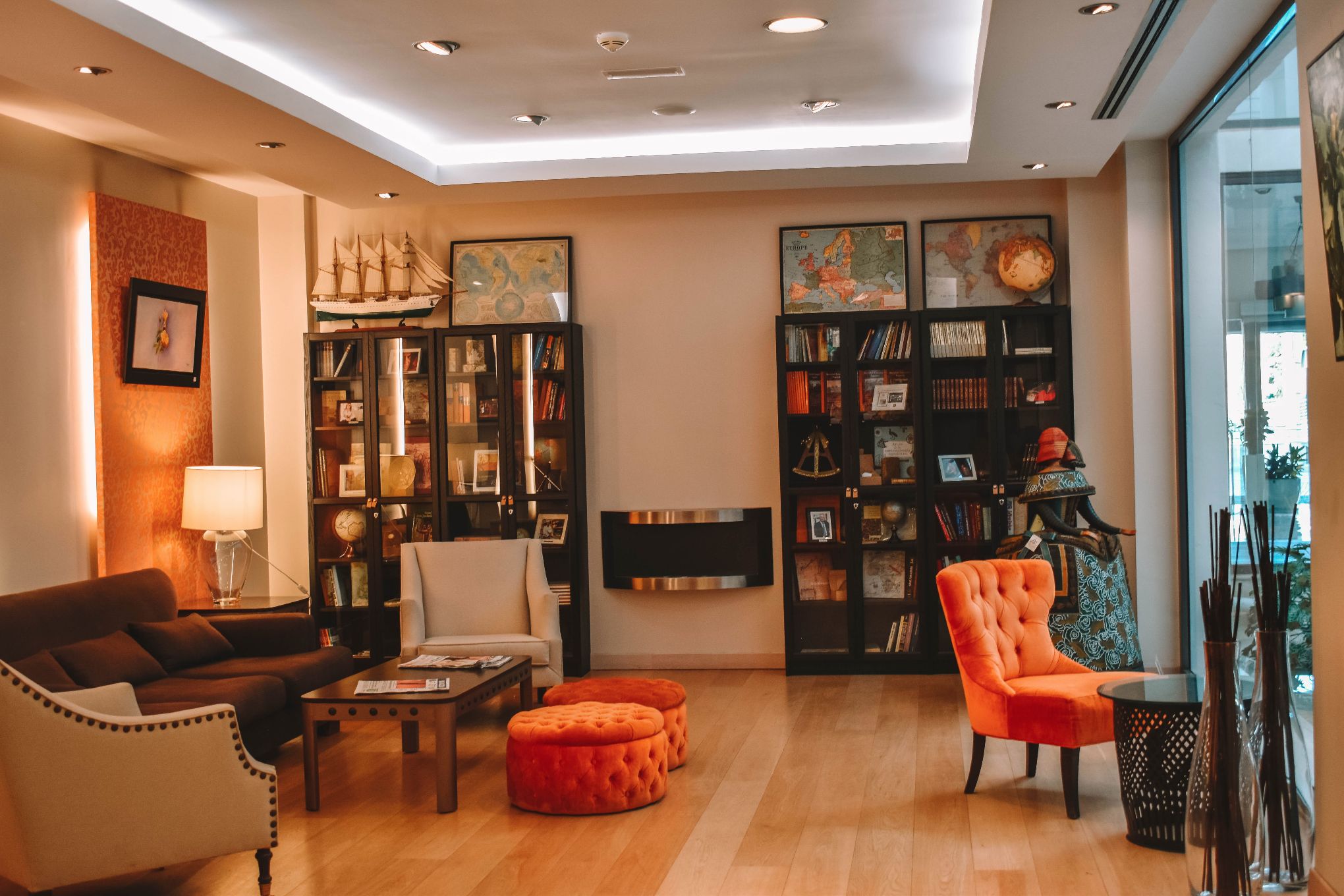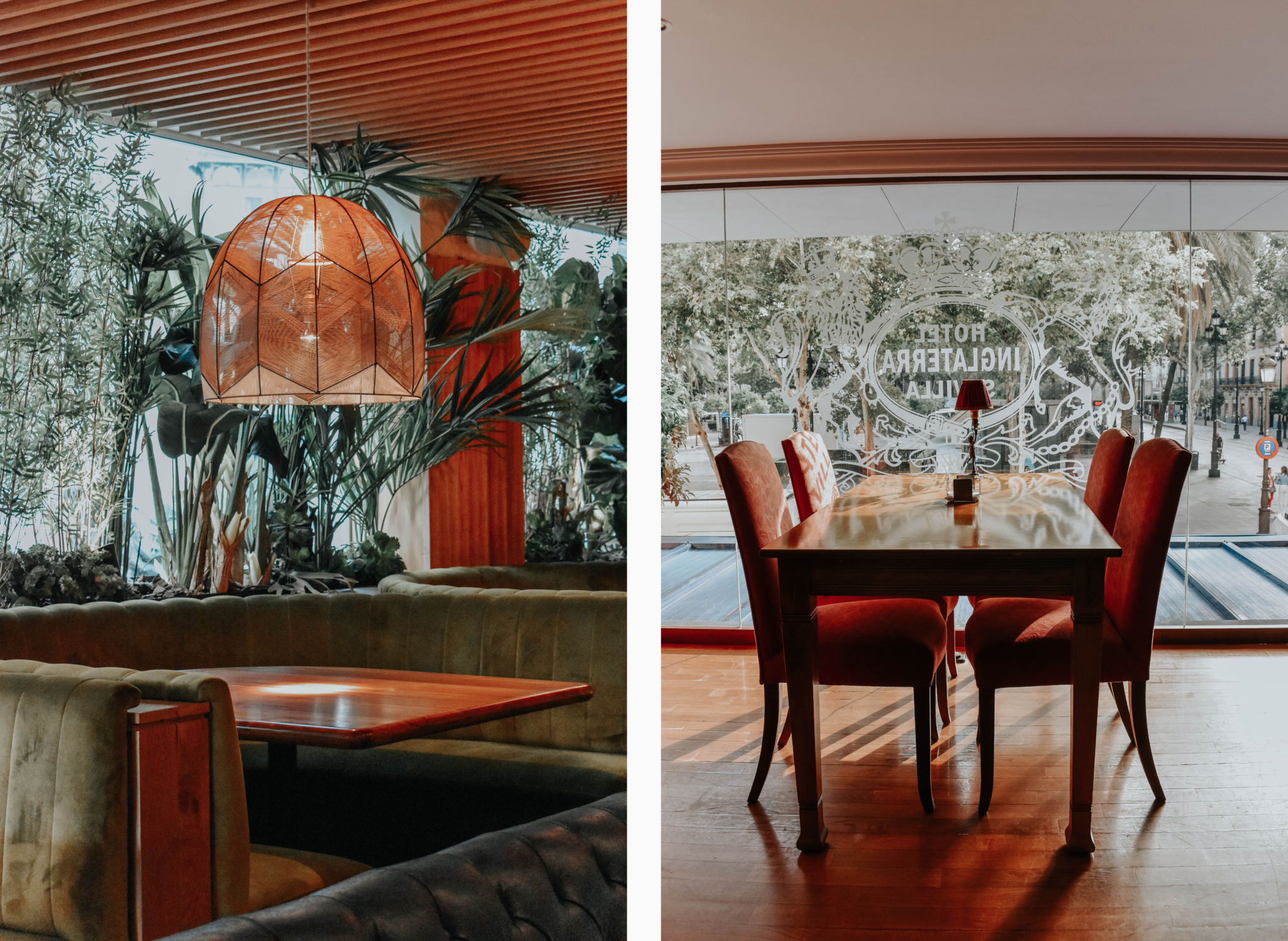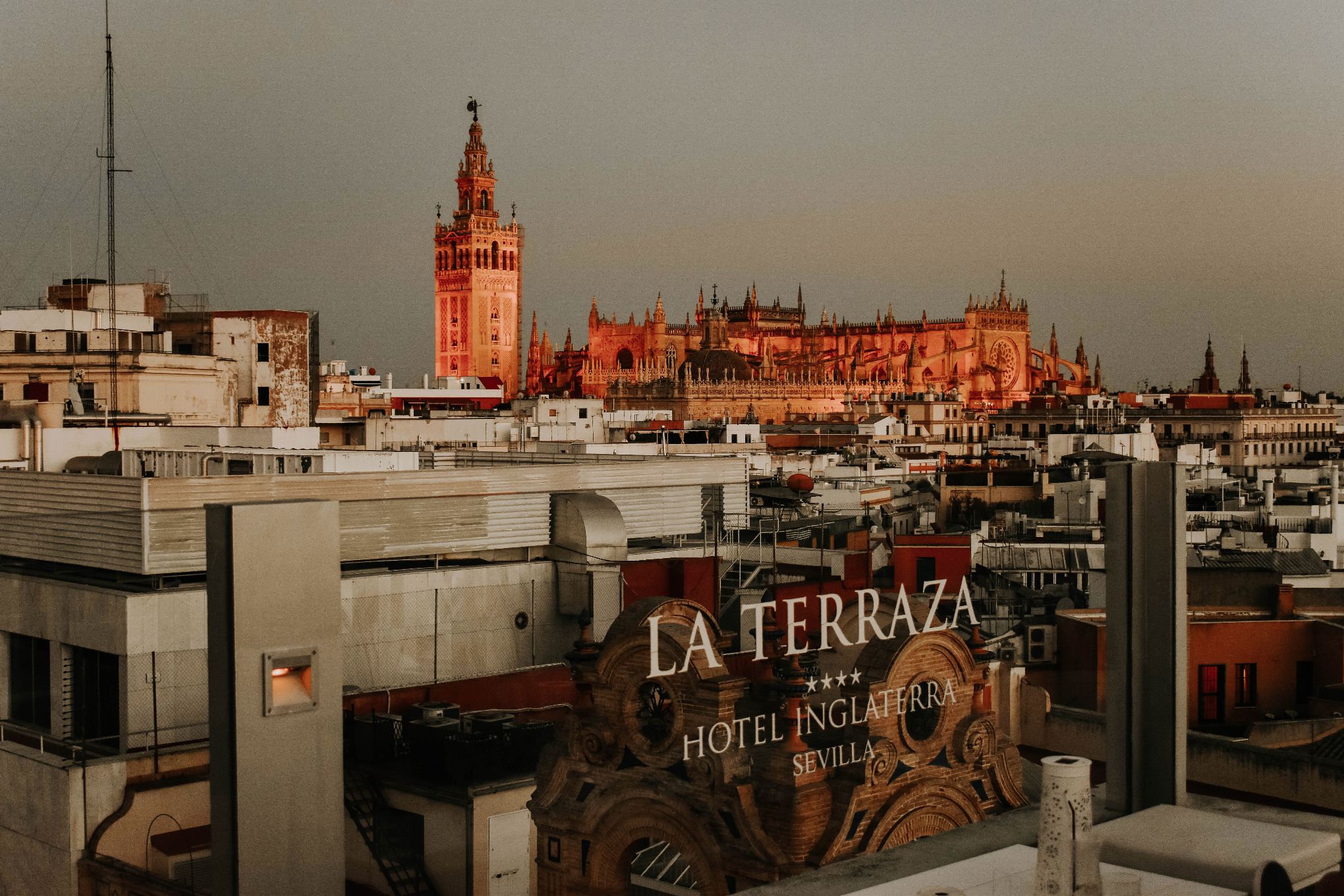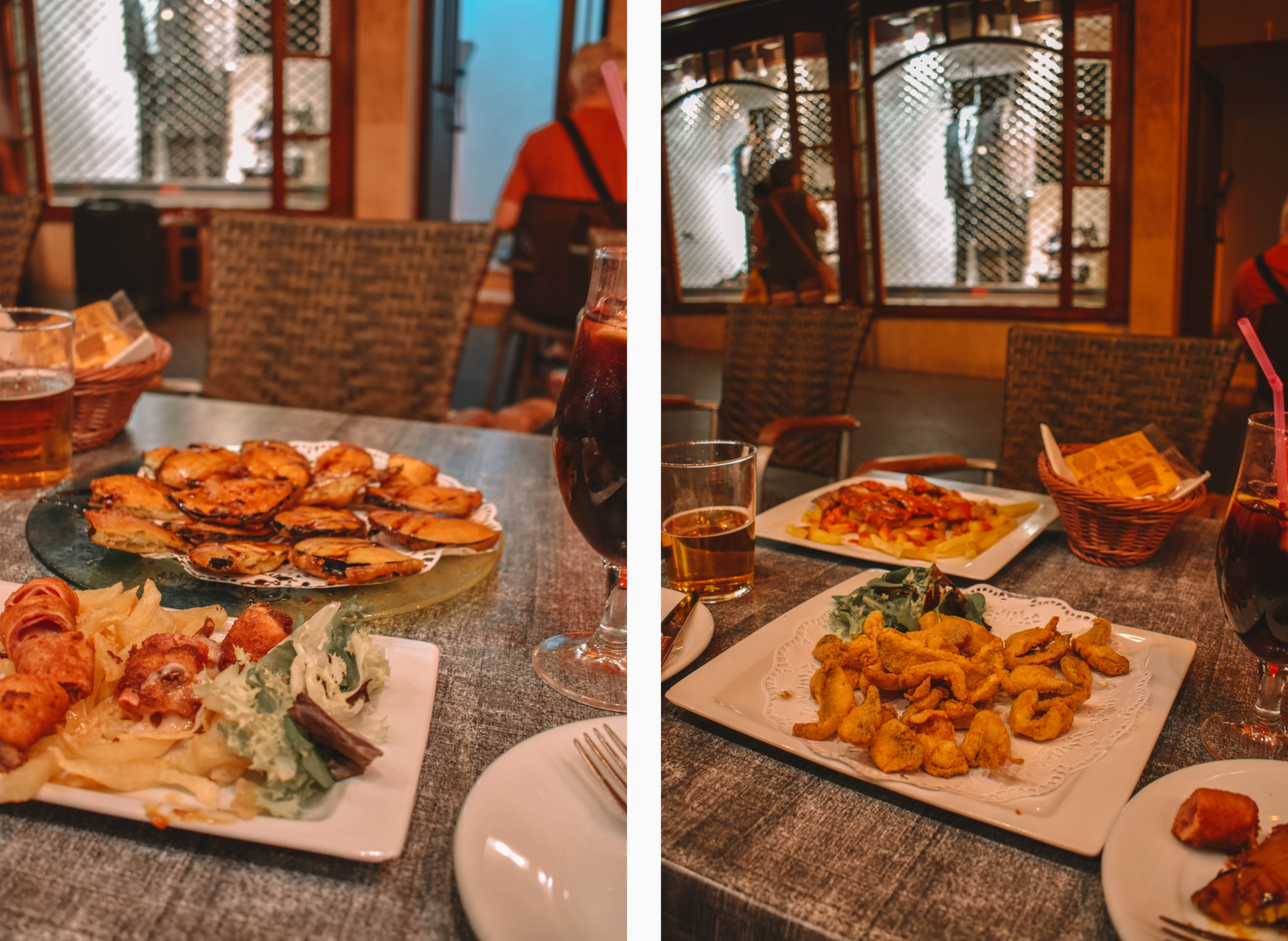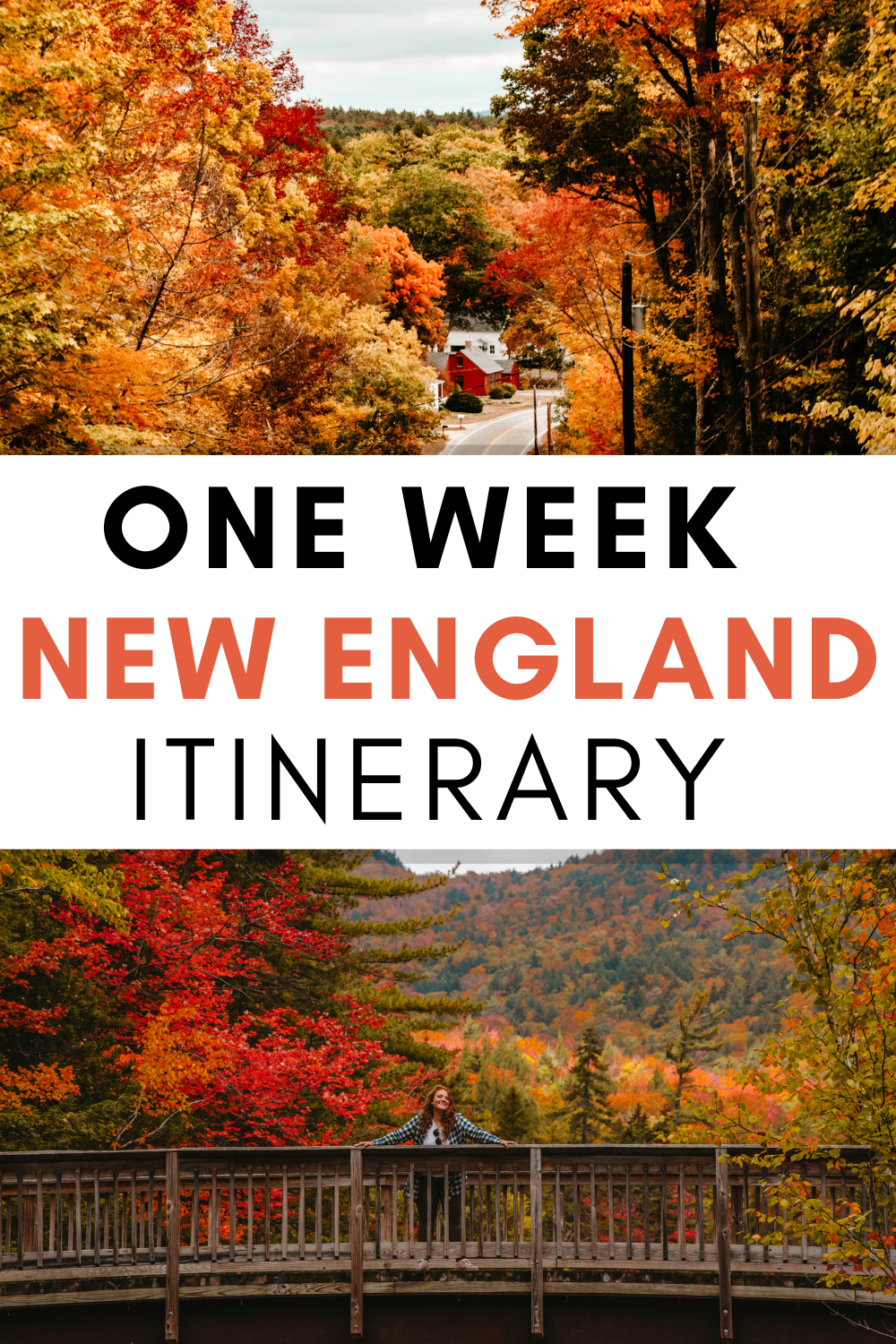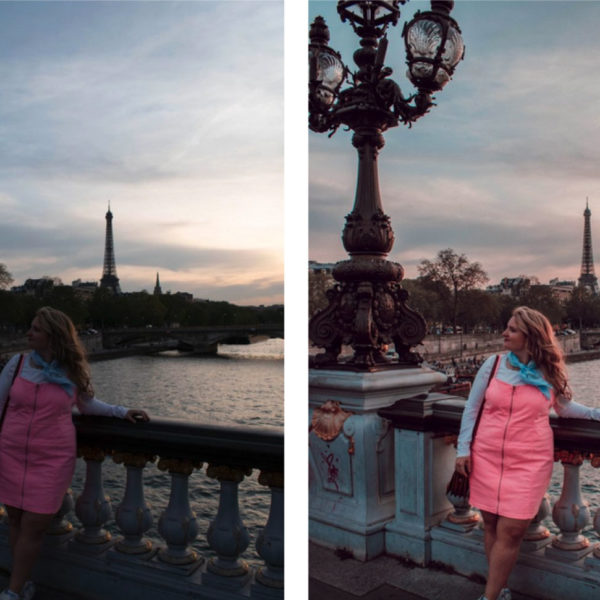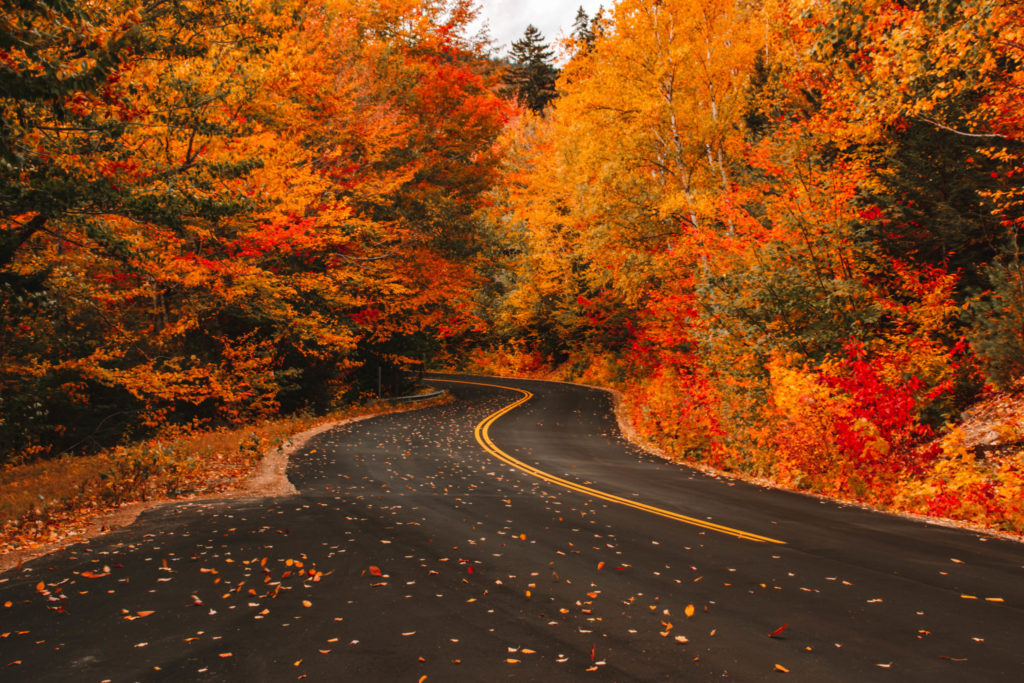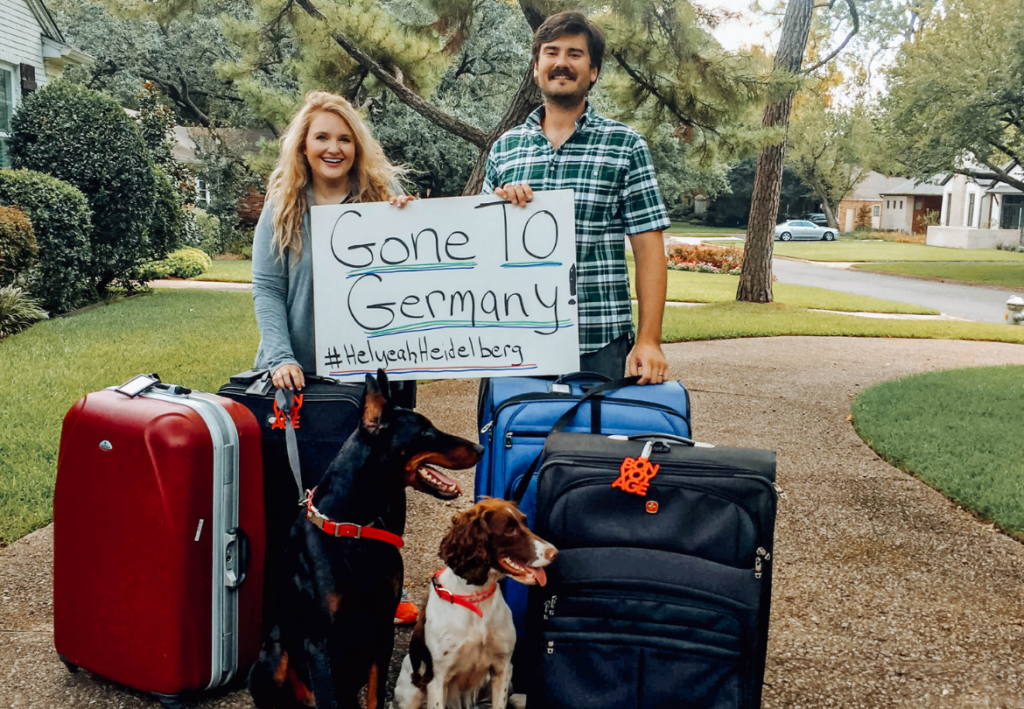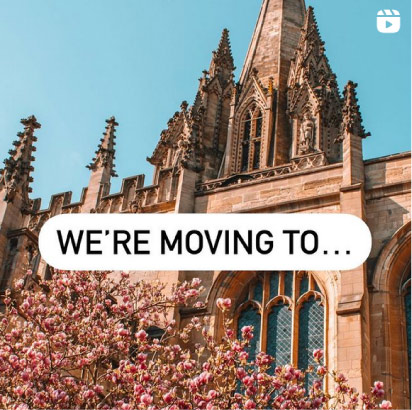The spirit of Andalusia is intoxicating – without even drinking the wine. Great art, late night dining, and beautiful streets, Southern Spain has so much to offer. There’s fascinating history along with authentic, delicious food with the stunning backdrop of a diverse landscape with beaches and mountains. This region is comprised of eight provinces and is quite a large area so it's hard to know where to start. I've got the ultimate one-week itinerary and road trip guide to Southern Spain.
The Andalusia region of Spain is more laid-back and the nice weather almost all year round permits a very social culture. It feels as if every day there's a festival. The traditions of siesta, tapas, jamon, and flamenco dancing are all happening here. The large squares are like the living rooms of the communities. At night people go out to mix and mingle, drink, and dance.
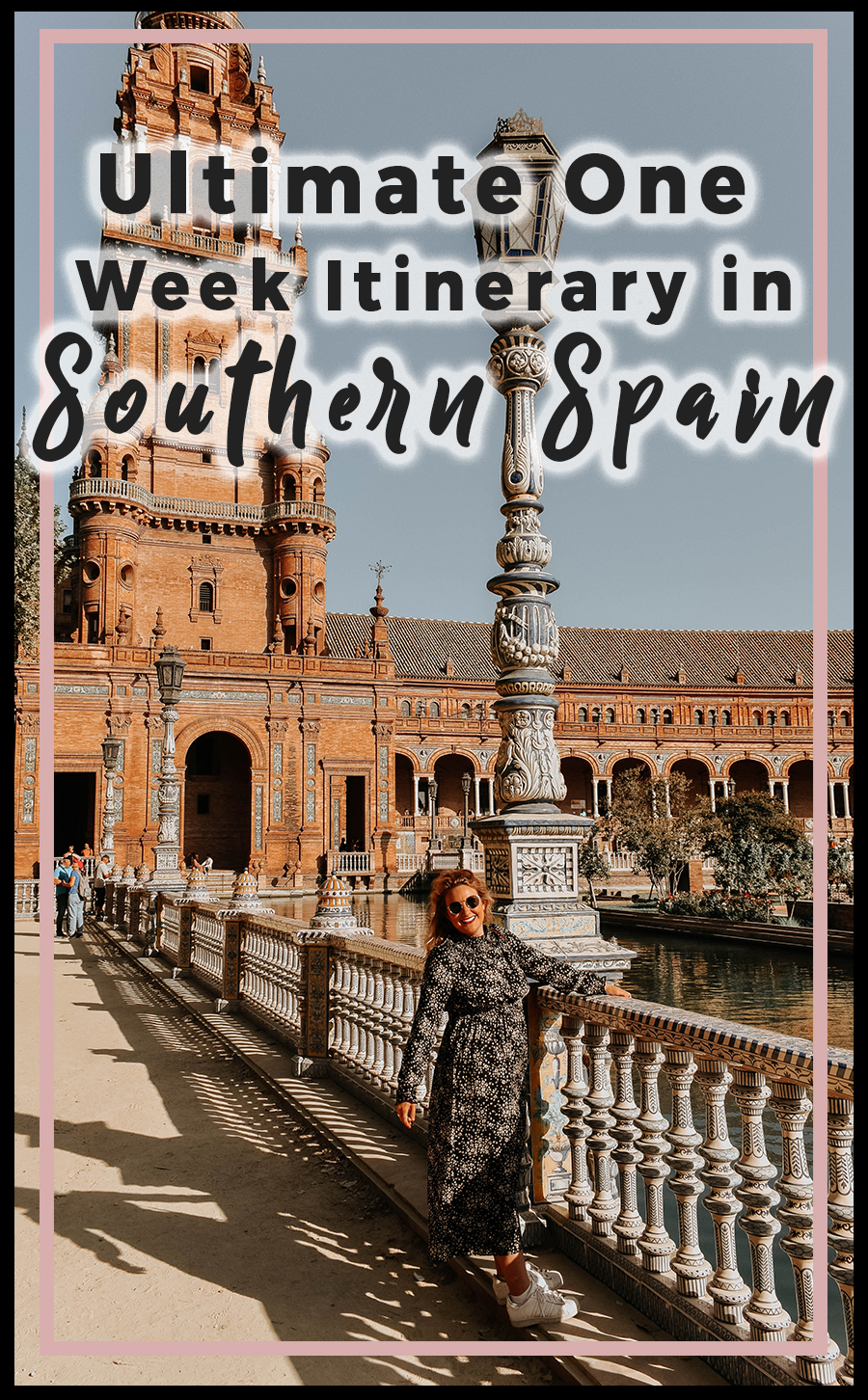
This trip was a surprising one for me. Not only did we get a taste of the flavors and traditions of the south of Spain, we also got to see the long stretches of wide open spaces (very rare in Europe), dipped over to the British overseas territory of Gibraltar, and could see Africa in the distance from Tarifa. Truly, this trip was a treat. This guide will ensure you make the most out of your travels through Andalusia.
Ultimate One Week Itinerary in Southern Spain
I looked at our itinerary and gasped. Could we really go to 13 places in just 7 days? We tend to try and see everything in a city and I was worried we were packing ourselves too tightly. But as it turns out, we not only saw it all, we got to enjoy some leisurely days feeling like Spaniards: sipping wine and lounging on the beach. On average Spaniards devote nearly 16 out of 24 hours a day to leisure activity. It was only natural to feel like the locals.
Andalusia is by far my favorite region in Spain. Our trip was fun to plan and driving was the perfect way to get around. We saw quite a lot in seven days since the roads are well marked and pleasurable to drive. I hope my guide will make it easy for you to plan your trip to Southern Spain.
Many of the towns are very small but accessible. Allowing yourself a day or even just spending the afternoon there gives you plenty of time. Of course, if you'd like to extend your trip you can add on days as you see fit or stay longer in certain cities. Here's a look at the map of our route:
[toc]
Originally Spain was called “Hispania” by the Romans, which translates to “land of rabbits.” When they came, they thought no one lived here and there were just thousands of rabbits dotting the open space. Now, it's bustling with life and Andalusia is my top recommendation for visiting Spain. One week in Spain makes it tough to see all the highlights but this itinerary will cover many of the best cities of the Andalusian regions.
Below you can find a map of all the places discussed in this post:
Day 1: Malaga
Fly into Malaga's Pablo Picasso Airport (the birthplace of the artist). This is the best option, especially since it's only a few short miles from the city center. It's also an ideal place to take day trips from. Spain is well known for three top cities in the Andalusian region: Seville, Cordoba, and Granada. And don't worry, we'll be visiting all of them. But I think Malaga should really be included in this list. Malaga is somehow fancy and clean, yet unassuming.
Walking through the city you'll see beige and green marble beside streets juxtaposed with well-lit buildings and intricate balconies. Unmissable is the tall reaches of the Cathedral of Malaga. There are street performers and artists that line the walkways showing off for your money. It's no surprise, the Main Street of Malaga (Calle Marques de Larios) is the 5th most expensive street in Spain, and also happens to be where they carried all the sweet wine. Make sure to grab a glass for yourself!
We started off with a walking tour to get acquainted with the town and all it has to offer. After walking around we spent some time listening to a boys' choir perform in the impressive Catedral de la Encarnación de Málaga. Aka, the Malaga Cathedral, or one-armed lady, because it only has one tower. I recommend taking a walk around since the back of the church is full of orange trees. I also recommend the Museum of Picasso which exhibits 230 works from the artists from the late 19th century until his 1973 death.
As you roam around you'll see the Roman Theater Alcazaba. Be on the lookout from here for Antonió Banderas, his penthouse is across the street! He was actually born here and has even participated in the annual (and exquisite) Easter celebration. There is a festival that happens every Easter, called Semana Santa, where two huge floats carrying Jesus and the other carrying the Virgin Mary proceed down the street. These occur all over Spain and are a strong tradition dating back to the middle ages. You can see the incredible and extremely heavy floats for yourself at the Malaga Holy Week Museum.
You can also hit up the market, Central de Atarazanas, for some fresh juices and great food. Lastly, check out some of Malaga's coast, the beach is just a couple miles away from the city center.
A great place to stop for dinner is the modern tapas restaurant uvedoble taberna málaga.
Day 2: Granada, Nerja
Today we'll explore Granada and Nerja, two of the most famous places in Southern Spain. The drive from Malaga to Granada is just an hour and a half, so it's easy to take a day trip here and still spend the night in Malaga, which is only 45 minutes from Nerja.
Granada is well known for one important place: the Alhambra. Make sure to get tickets in advance. I'm not talking about just a few days before, to ensure you can see all the palace has to offer you need to book farther in advance. You can do so right here. I suggest getting the one that includes the Nasrid Palace as this is the most intricate and beautiful structure on the grounds. When you purchase your ticket you'll have a specified time to visit the Nasrid Palace. It's sold out daily and you must only go at your allotted time.
First constructed in 889, the Alhambra is a place where royalty flourished under both the Moorish influence and later, after the Reconquista, it became the royal court of the Catholic Monarchs Isabella and Ferdinand. This UNESCO site is where Christopher Columbus came to the Monarchs to ask for money to go to the New World. The Nasrid Palace is incredibly detailed with a history and story behind every room. Salón de los Embajadores (Chamber of the Ambassadors) is overwhelmingly grand, there are over 8,000 cedar pieces in a pattern of stars that represent the seven heavens of Islam.
After you spend time at the Nasrid Palace make sure to walk around the sumptuous grounds of the Alhambra. It's a great way to see the city of Granada below, walk through beautiful gardens, and take a peek at what royal life felt like. I recommend taking the “General Life Path” which will take you through the highlights on your audio guide. Expect to spend about 2-4 hours here.
After our tour we stopped for lunch in the city of Granada, located just down the hill from the Alhambra. Granada is the perfect place to take a stroll. Full of life and passion, it embodies the combination of Christian and Moorish cultures. With the Sierra Nevada mountains as a backdrop you’ll have a feast for your eyes as well as your palette.
Take a look at the Granada Cathedral, built on the site of a mosque it's Spain's second largest cathedral. Next head to the Royal Chapel where Ferdinand and Isabella are buried. You can check out Alcaiceria a narrow laned market echoing from the Islamic days where you can still find spices and goods. On your way out find the Corral del Carbón which is the oldest monument during the Nasrid dynasty. This was a warehouse and shelter for merchants built in the 1200s.
Trading culture for the coast, head to Nerja. This small town is one of the most sought after destinations on the Costa del Sol. Nerja sits at the end of the Chillar River and is flanked in between the Mediterranean Sea and the mountains of the Sierra de Tejeda. Grab a custard apple and watch the musicians perform in the main square or head down to the beach for sunset. We had a great dinner then headed back to Malaga for the night.
Day 3: Cordoba, Seville
Córdoba is known for the large, beautiful mosque full of hundreds of orange and white columns. The Mezquita of Cordoba began in 786 and took almost 200 years to compete. The once mosque and converted cathedral (a common theme for cathedrals in Andalusia) has beautiful aspects of both- a detailed mihrab and impressive Christian elements like an exquisite altar.
We walked around town and took in Cordoba's Roman bridge, Puente Romano. We then went to the museum at the end of the bridge, Museum of Al-Andalus Life. I don't recomend this museum since it talked little about the day-to-day lives of Andalusians and was a bit hard to follow. The most attractive part of Cordoba, in my opinion, is to just walk around and take in the lovely and shaded courtyards and patios often populated with lush greens and flowers. As far back as the Roman times houses were built with an open-air atrium protected from the sun. If you're interested, there's also a Patio Museum, Palacio de Viana.
Check out the Roman temple ruins which were discovered in the 1950s when Cordoba's town hall was expanded. Before heading back we went to the UNESCO site Alcazar fortress which is where Isabella and Ferdinand ruled. Originally constructed in 1328, it reflects a more military fortress. From here we headed to Seville.
It's very easy to see why people love Seville. Upon arrival, I was struck with the absolutely stunning architecture and the liveliness of the atmosphere. People were spilling out on the streets or dining in cafes. Seville seems to emulate a particular sort of Andalusian spirit. Since we arrived at night we had a late dinner, just like the Spaniards, and walked around to see the beautiful town lit up. I marveled at the Cathedral. But what I loved most was the outbreak of song and dance on the street. I felt like I just waltzed in on a musical. There was a crowd of 100 people gathered around a group of about 15 talented singers and musicians singing traditional songs.
Day 4: Ronda, Grazlema, Zahara de la Sierra
These next few towns are much smaller so it's easy to see them in a day trip from Seville. We headed towards Ronda, but first stopped at the Cueva de la Pileta to see drawings from 32,000 years ago! Our guide spoke very broken English, luckily we made a friend that could translate, but I'm assured that most of the guides speak both English and Spanish. Regardless, it's incredible to see cave drawings from such a long time ago. The cave is a short hike up from parking but you will need to call in advance (the day of is fine) to reserve a spot.
Next on our Andalusian itinerary was the town of Ronda. The town is split in two by the river which carved a deep ravine. If you want a view of the unforgettable Puente Nuevo bridge covering the gorge walk down the Camino de los Molinos. Ronda is also the site of an old bull ring which is said to be the home of modern day bullfighting. We had a quick stop here and the best part was the DIVINE .80€ tapas. Find them at Bar El Lechuguita and don't miss out since lines form early. We got in after the lunch crowd and found some seats at the bar.
We breezed through the next couple stops since these small whitewashed towns can be taken in just by walking around. We first went to Grazalema. This bright white town is contained in the green hills of the Sierra de Grazalema Natural Park. This small village is known for their handcrafted and sturdy wool blankets.
Even smaller still is Zahara de la Sierra. Known for its small Moorish castle, we ate dinner here and headed back to Seville for the night.
Day 5: Seville
Seville (or Sevilla) is known as the “gateway to the new world”, and it's obvious to see why many would stop here and be floored. The architecture here is some of my favorite in Europe. It's also said to be the birthplace of flamenco and you can feel the passion that people have for the music and dance. Since we only arrived at night to see Seville, we wanted to see it during the day and see some of the highlights.
Seville is a somehow flamboyant but quaint city. In 1992 the World's Fair was hosted here which left the city with good infrastructure – you'll find it's simple to take public transportation from place to place. Although it's the fourth largest city in Spain, I still recommend walking around.
Must-do's include the huge Seville Cathedral. This is the third largest church in Europe and the largest Gothic church. Again, this is built over a mosque. All that's left from the Moorish period is a tall tower, now a Christian bell tower. Here you'll find the tomb of Christopher Columbus.
Right beside it is Sevilla’s famous Alcazar, the oldest palace still in use in Europe. Inside you'll find fabulous patios and salons as well as gardens. You will need to book tickets in advance here. It sells out daily and the line outside stretches for hours. After you tour here take a walk around the old town and take a look at the Torre del Oro, or Golden Tower, which sits on the banks of the Guadalquivir river. You can also cross the river and go over to a different part of Seville called “Triana” which reminds me a bit of Montmarte as a different part of Paris. They like to differentiate themselves from the rest of Seville.
You can explore the old Jewish Quarters in Barrio Santa Cruz and if you'd like to learn more you can go see the Museum of Flamenco.
One of my favorite places was the lovely Plaza de España. Located in the Parque de María it was built for the Ibero-American Exposition of 1929. It's a mix of detailed architecture with Moorish and Spanish influence. You might recognize this plaza from scenes in the movie Star Wars II!
Bull Fighting is still famous in Spain. While it's not something I can personally stomach, you can learn about the history and culture surrounding the tradition with a tour of the bullfighting arena: Plaza de Toros.
Make sure to go to Bola's for unique flavored gelato and Casa la Viuda for a savory tapas dinner. Finish off your time in Seville with a flamenco show!
Day 6: Arcos de la Frontera, Medina-Sidonia, Vejer de la Frontera, Tarifa
We left in the morning from Seville and took the scenic route, we stopped for pictures along the way and saw more chuckar birds (quail) and olive trees than I've ever seen in my life. We got to Arcos de la Frontera and explored this lovely town. I suggest heading to the tourism office and grabbing a map and history of the town. One of my favorite but surprising spots was the Nativity scene or Belén (which is Spanish for Bethlehem). This miniature version of the nativity changes from day to night and uses mirrors to illuminate and tell the story of Jesus' birth.
Take a peek inside the town's church and then walk to the opposite side of the plaza to get a view of the cliff. They boast that they can see “the backs of birds as they fly” since the town is so steep. During the day at the lookout you'll find a rescue bird organization. There are about a dozen birds you can see up close and personal. With owls in all shapes and sizes as well as hawks.
Out of all the white-washed towns Arcos de la Frontera was my favorite in the South of Spain.
From here we traveled towards Tarifa and on the way we stopped in Medina-Sidonia. Get on your walking shoes, these cities are steep. We took a quick walk around and sauntered through the elegant Plaza de Espana of this white-walled town. This city is considered by some to be the oldest city in Europe.
Next we headed to Vejer de la Frontera for one last hilltop town to admire. This one was particularly lovely and looked almost like I was walking through Santorini. Make sure you peer through the Arco de La Villa for a picture perfect scene.
We arrived in Tarifa just in time for a picnic on the beach and sunset. We had drinks at the overpriced but beautiful Carbones 13 and walked through the town at night. What we noticed most was how many dogs there were running around playing at the beach. It was so heartwarming. Also from here you can see Africa in the distance.
Day 7: Gibraltar
We could have spent a bit more time in Tarifa but we enjoyed the beach, then forged on to Gibraltar. I absolutely loved Gibraltar. I think I felt so giddy about the idea to walk over the border from one country to the next where I could still see Africa just made me laugh.
Gibraltar is known as the “top of the rock” and even though it's really just a tiny speck on the map the Brits refuse to give it up as it's a strategic military position. The Rock of Gibraltar rises majestically out of the Mediterranean and you can see Africa on a clear day.
We drove here from Tarifa and parked our car outside the border after seeing the long line of cars. I'm glad we did. Driving your car into the city is not recommended as you can wait up to three hours in the queue for passport control. We had no such issues going in on foot. We parked on La Linea Street which is inexpensive pay and display parking. Because it is a British overseas territory you'll need to show passports at two spots along the way and on the way out.
To walk across you'll have to cross an airport runway. We had to wait about 15 minutes since a plane was landing. Once it passed it was interesting, to say the least, to walk the runway and over the border. As soon as you cross you'll see the traditional red telephone booths and signs for fish and chips. I couldn't get enough.
From here we went straight up to the top of the rock. Go early as possible to avoid crowds and lines. DO NOT take a cab up. They will tell you that it's easier or that you'll be “packed in the gondola like a sardine.” I found just the opposite to be true. A cab ride is double the price and doesn't take you to the very top. Plus the cable car ride was very lovely and we were immediately greeted with monkeys upon our exit at the top.
The Barbary Macaque monkeys were brought here (or maybe hopped on a boat) from Morocco to this very spot. You won't find them anywhere else in Spain, or England for that matter. Be careful as they might look cute but you're instructed not to feed or touch them. They are incredibly smart. One jumped right on top of Michael's back and unzipped his backpack's zipper. I wish I caught this on camera but we were trying to get the monkey off and our stuff back since he quickly started rifling through! One of the most memorable experiences I'll have to date.
After you get your fill of the monkeys, take a walk around. Over 30,000 British soldiers were stationed on the Rock for World War II. There are many fortresses and bunkers. From here you can keep walking to the viewpoint that's made of glass. Just be careful, when I was there they were fixing a crack below my feet!
One of the top attractions is St. Michael's Cave which is a network of limestone caves with stalactites and stalagmites jutting out from every corner. It's a different experience as there are multicolored lights displayed throughout and sometimes they have shows in here.
You only need a day in Gibraltar but you can walk around the town and grab some British cuisine on your way out. The “solid as a rock” Gibraltar is definitely worth the side trip.
Planning Your Andalusian Trip
Where to stay
Where you stay can make or break your trip. I believe in staying somewhere centrally located, especially on a tight schedule like this, so you can ensure you make the most of your time. Throughout this trip we stayed in the absolutely exceptional Preferred Hotels. What I love so much about these hotels is that you know, without a doubt, that you're getting quality when it comes to your hotel. This can always be tricky when it comes to picking a place to stay and you can rest at ease with Preferred Hotels.
In Malaga we stayed in Vincci Selección Posada Del Patio where I was immediately struck by the elegance and ambiance of this hotel. You'll find art displayed throughout the hotel by local artists that is rotated every two months. But one of the coolest aspects is the glass floor which reveals the ruins found and unearthed on behalf of the hotel itself!
The room is clean and sophisticated with dual sinks and luxurious linens. Hotel Vincci is located very close to the heart of the old town and the quiet patios lend to enchanting views. We were greeted with a lovely gift basket filled with my favorite treat: Diet Coke. It also came with a Malaga specialty: the sweet wine.
I've been to a lot of hotels in my day and the breakfast at Hotel Vincci was one of the best I've ever had. Not only was there a plethora of meats, including Iberian ham, there was fruit, bread, meat, drinks, traditional Andalusian offerings, and even a menu (included!) where you can order steaming omelets or pancakes. I recommend the sinfully delicious waffle drizzled with caramel sauce.
There is parking on site which we took full advantage of to make it easy to come and go at our own will. The staff was friendly and helpful and recommended great places to eat nearby. I highly recommend staying at this beautiful, modern hotel. This 5-star hotel was the ideal way to kick off our stay in Andalusia.
Further along on our trip we again stayed at another Preferred Hotel, this time in Seville at the best possible location: Hotel Inglaterra. This hotel is a must for your stay in Seville. The location is within walking distance from the Cathedral, across the street from public transportation and the ornate edifice of Seville Town Hall. The hotel and building are extremely historic, with 150+ years of history. I was taken with the ornate and regal details in the rooms that made me feel like I was stepping back in time, without losing out on the comfort qualities of a top-notch hotel.
Each room includes wooden floors, yellow and blue touches, and classic antiques that make the room feel special. We had plush robes as well as his and hers sinks.
Despite this old world charm hotel, there's a very swanky bar on the first floor that has gorgeous design elements. This is a great place to grab a bite to eat and luxuriate in the plush green seats. Also, the hotel offers free tea and cake during the day. Michael and I spent a couple hours here sampling tea and dining on fluffy cake while we got a little work done.
The intimate breakfast nook was a great way to start the day and start exploring Seville. Hotel Inglaterra is classic and romantic, just like Seville. But the best part is the view of Seville on Hotel Inglaterra's rooftop bar. Grab a drink and watch the city come to life and glitter with lights.
Preferred Hotels ensured that we had the perfect stay through the Andalusian region.
Things to know
I've never had to buy tickets quite this far in advance before, but in Southern Spain you need to. Particularly for Granada's Alhambra (the Nasrid palace) and Seville's Alcazar. I found my Nasrid Palace tickets here and my Alcazar tickets here.
What to eat in Southern Spain? Make sure to try some jamon when you're in Andalusia. Iberico ham is the most famous here and I'm told you know it's good when the hoof is black. This dry-cured ham is produced from Iberian pigs and is made with the highest quality ingredients. I also recommend ordering the fried eggplant drizzled in honey, called “Berenjenas con Miel”. This might sound a bit strange but it's so divine. The Andalusian region is also known for Pescaito frito which is small fried fish or you can order “puntillitas” which is fried baby squid. Also, a popular seafood dish is “gazpachuelo” which is a typical fisherman's lunch made with fish stock, potato, and egg.
If you have the time you might like to go on an olive oil tasting. I've never seen so many olive trees in my life and the olive oil produced in Southern Spain is top notch.
When to go to Southern Spain? We went in October which we found very pleasant. The weather was warm, the crowds were few and far between, and we were able to get a reservation at every restaurant we wanted to try.
Southern Spain is an inspirational place to visit. I loved this trip so much because of the mix of what we did. White walled cities reminiscent of Santorini, Spanish enthusiasm and passion for life, jumping monkeys in the British city of Gibraltar, and an overwhelmingly lovely atmosphere. We found ourselves stopping a few times to take pictures or take in the view. I highly recommend at least a week in the beautiful Andalusian region. An impeccable mix of culture and soul, Southern Spain will leave you wanting more.
You might also like:



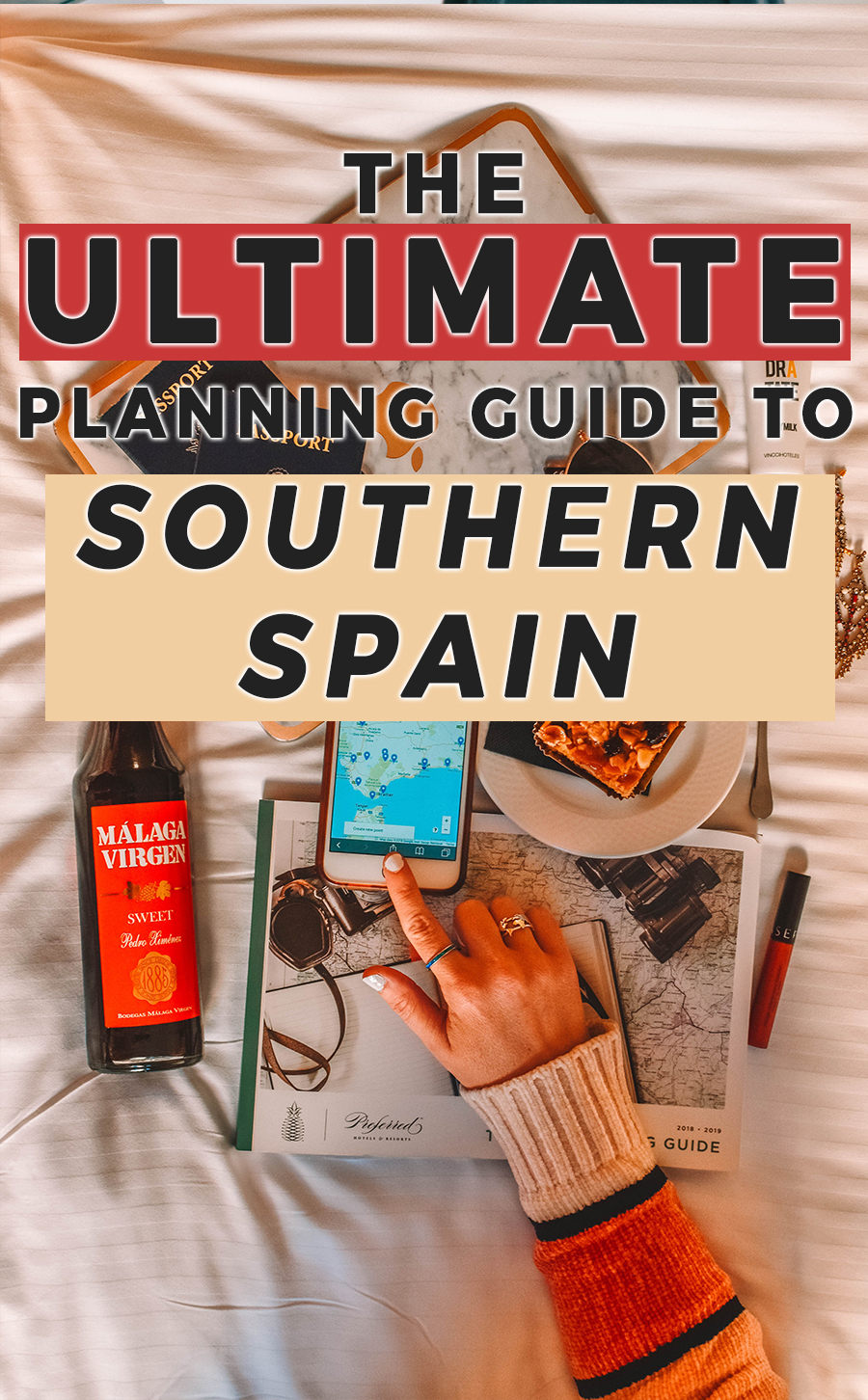 :
:
